Did you know that deep in the Colombian jungle, hidden amongst the mountains, and far away from any sort of modern-day civilization, lies the ruins of an ancient pre-Colombian empire? The remnants of a fallen city that were so secluded & wild that not even the Spanish conquistadors could find it. A place so shrouded in mystery that new sections are being discovered all the time, many of which are thought to still house extensive gold treasures & sacred artifacts.
Welcome to The Lost City, or “La Ciudad Perdida” in Spanish.
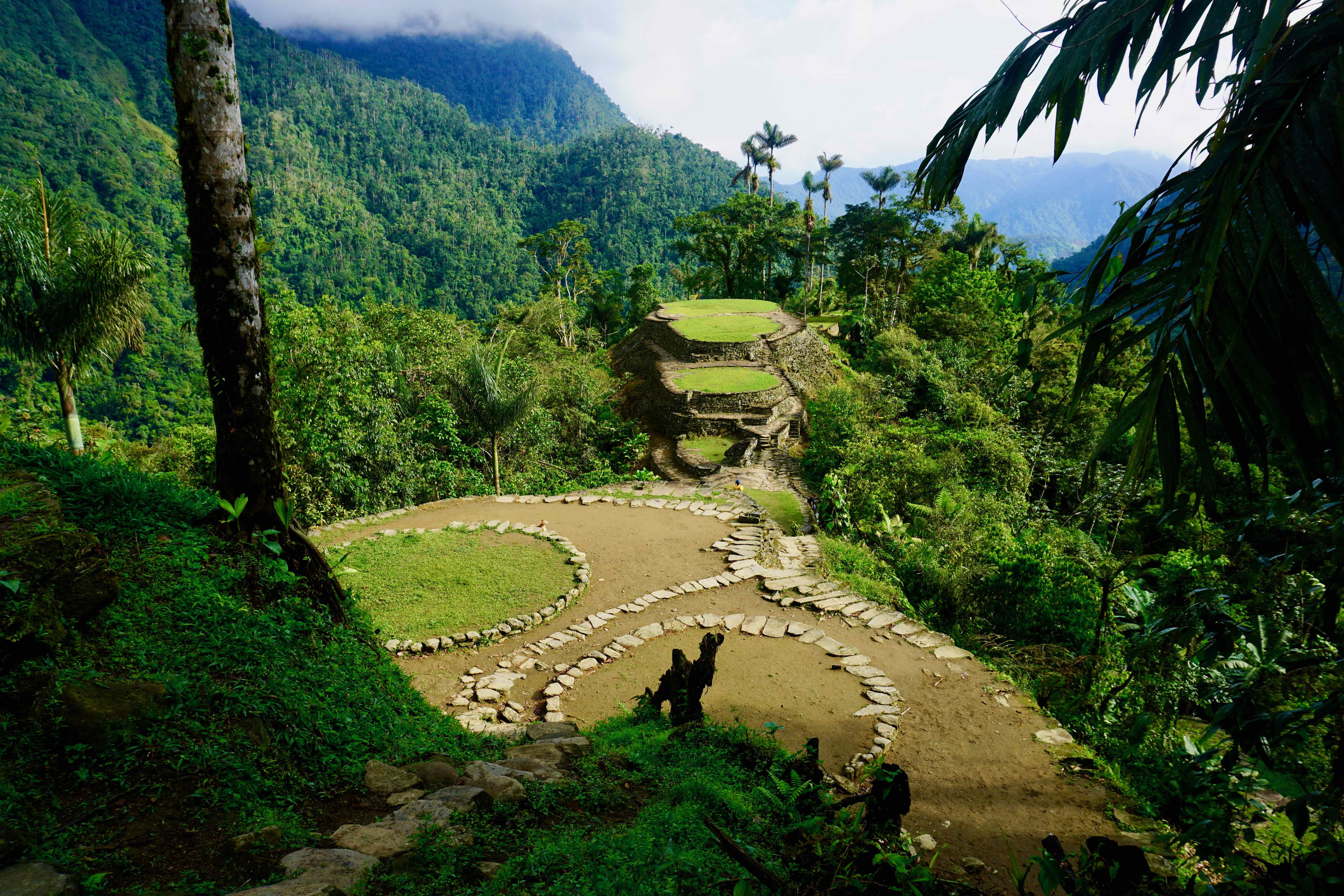
Virtually unknown to the outside world for centuries, the Lost City was “discovered” in the 1970s by local tomb raiders. After a few years of ransacking, the Colombian government stepped in to protect this sacred archaeological zone. Shortly thereafter it was opened up for tourism. The only way to see them is by braving a 4-5-6 day, 47km hike through the Sierra Nevada de Santa Marta, the highest coastal mountain range in the world.
Being a big time outdoors adventure guy, I’m constantly exploring nature and looking for the next exciting thing to do. So when I found out about the Lost City trek & the journey involved, my heart leapt at the prospect of such a mysterious escapade. It’s been on my radar for years, and after finally doing it the other week, I can say it’s even better than I thought it would be.
The actual ruins of The Lost City are much more impressive & extensive than photos online would lead you to believe. Furthermore, half of the joy of the Lost City tour is not just in the destination, but in the journey. Absolutely spectacular mountain scenery & views, wild and dense jungle, cascading waterfalls & refreshing swim holes, delicious food/timely snacks, more than adequate trail shelters for accommodations, and in my case, as I chose to do the tour with Magic Tour Colombia, fun, hilarious, & extremely knowledgeable guides.
I was inspired to write an article (my first in a long time) about this once-in-a-lifetime experience. Inevitably, many people will be unsure if they’re up for such an adventure, on the fence about if a 4-5 day trek is even worth it to them. Here are a few reasons why trekking to The Lost City undoubtedly is…
The scenery
I almost didn’t do the Lost City trek for various reasons, and I just about let a comment from a fellow backpacker almost tip the scale away from it at one point. He said, “I don’t know, I love hiking, but hiking through the jungle not so much. It’s the same scenery all the time, I prefer to hike in the mountains with views.”
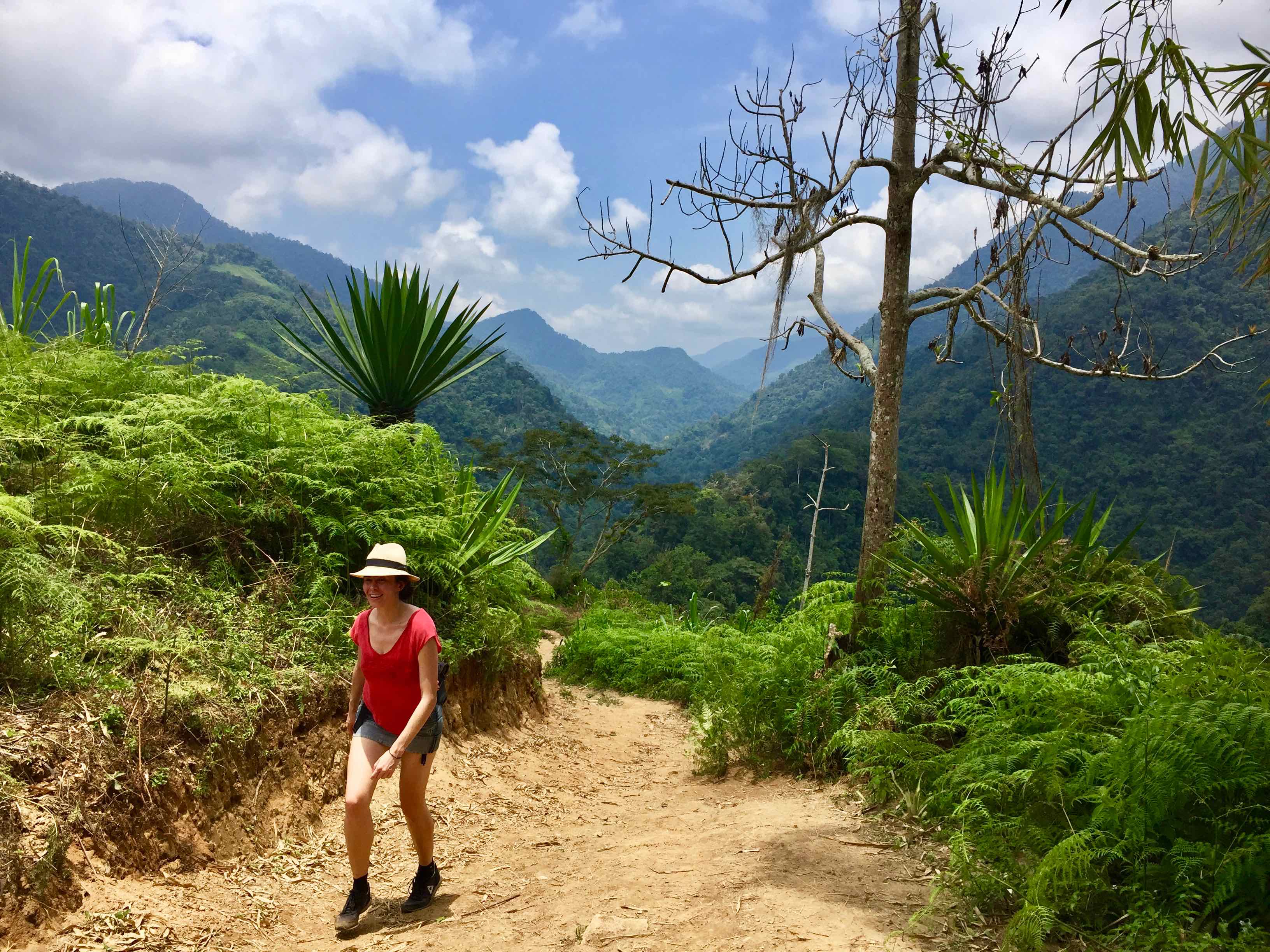
Yep, it all looks the same, nothing to see here!
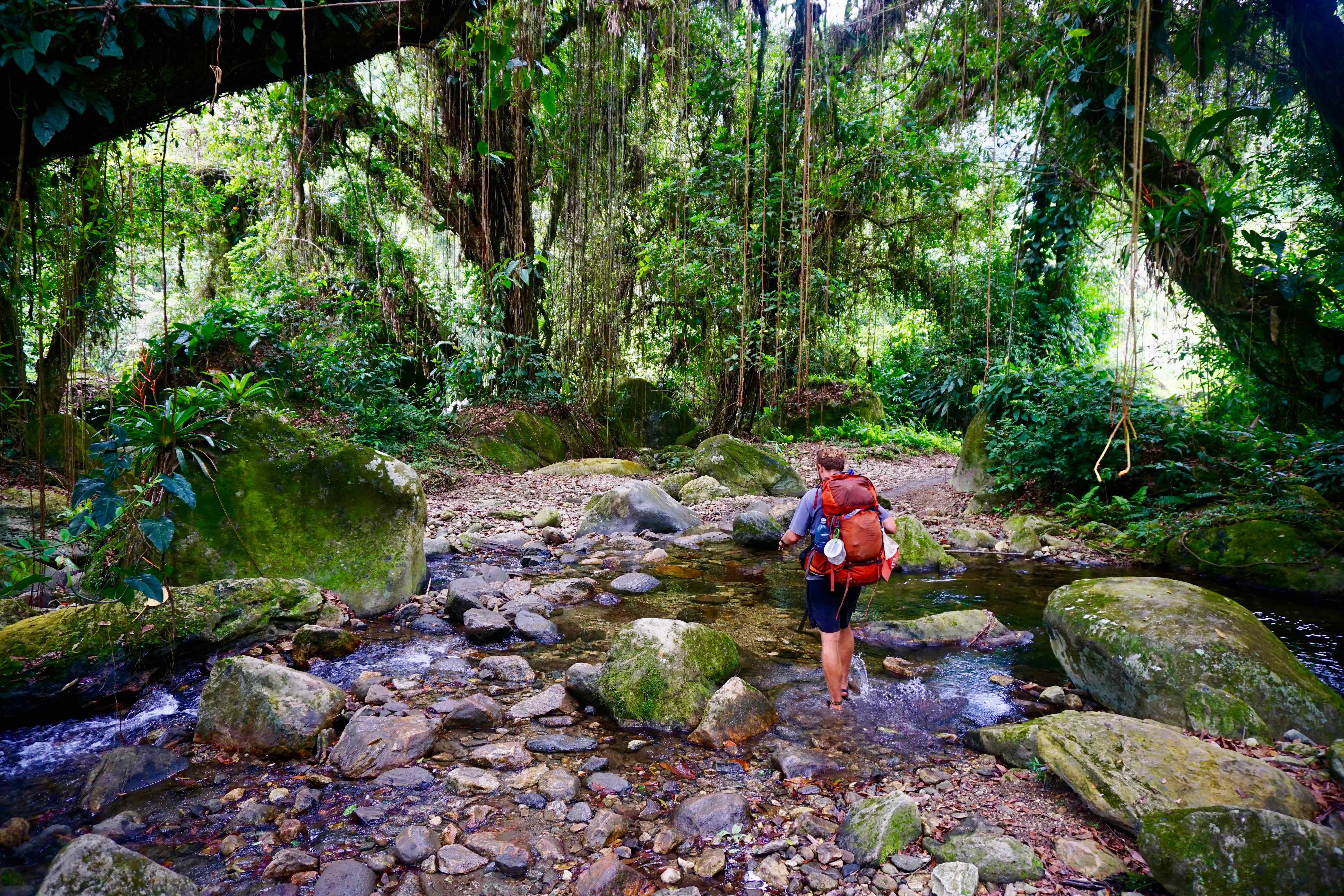
The Sierra Nevada de Santa Marta is a really beautiful mountain range, and you’ll have no shortage of inspiring views every single day.
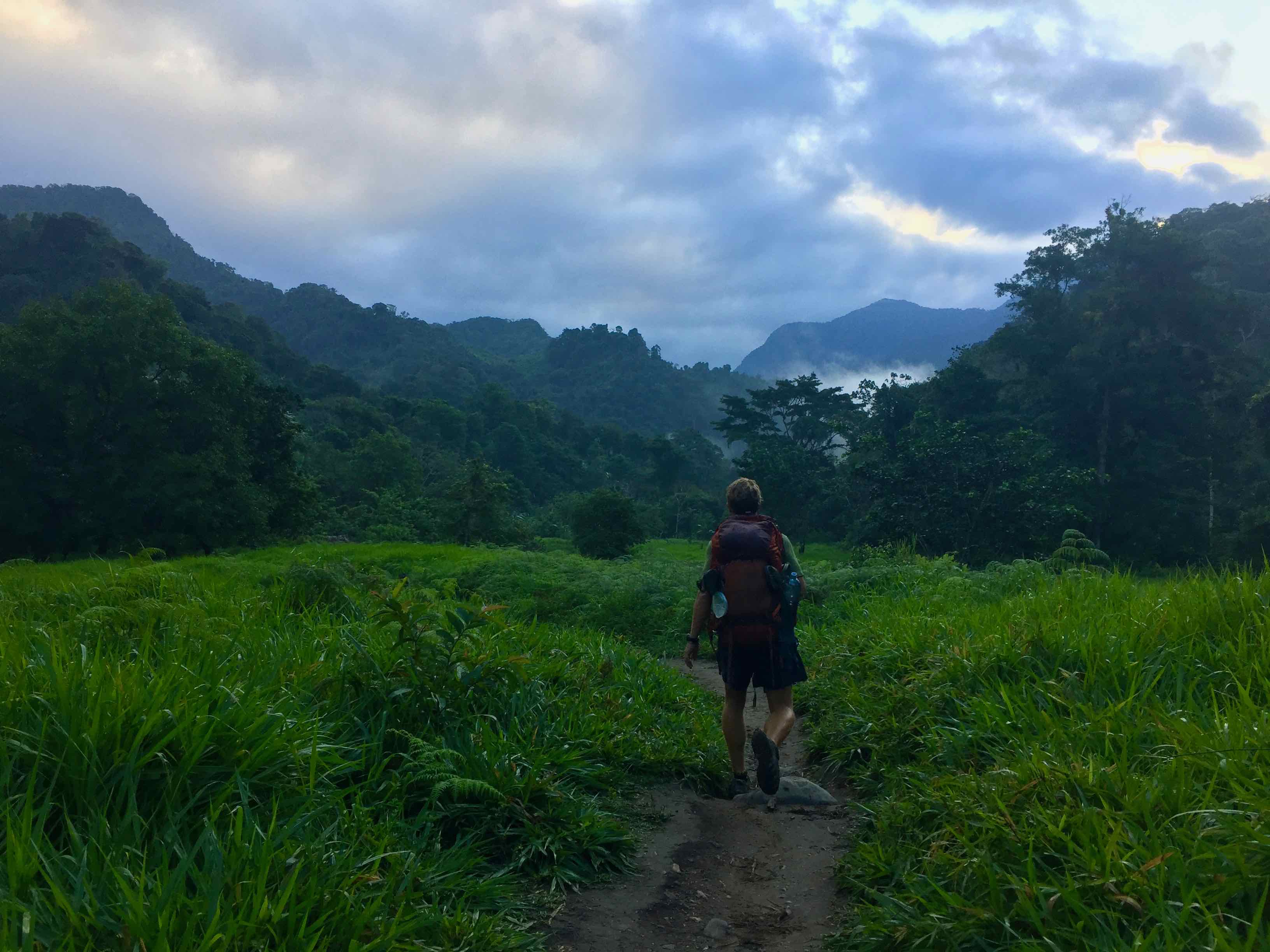
Early morning start through the misty valley
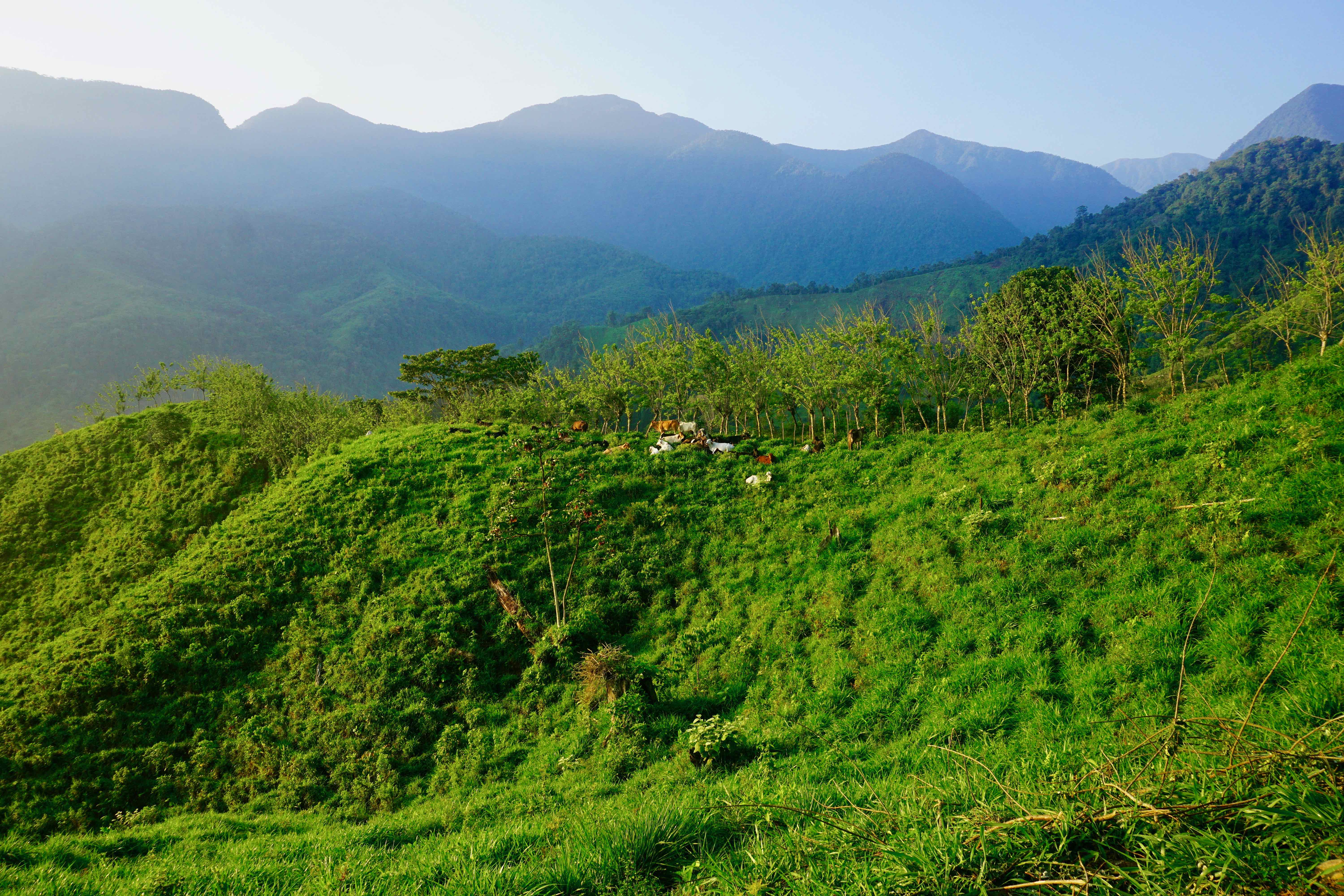
The sun rises and illuminates the mountains in a gorgeous array of color
The food
The food was absolutely delicious, and that’s not just my fat, finish-your-leftovers-off-and-maybe-yours-too @$$ talking. I heard pretty much everyone in my group remark about how impressed they were with the food at least once if not multiple times.
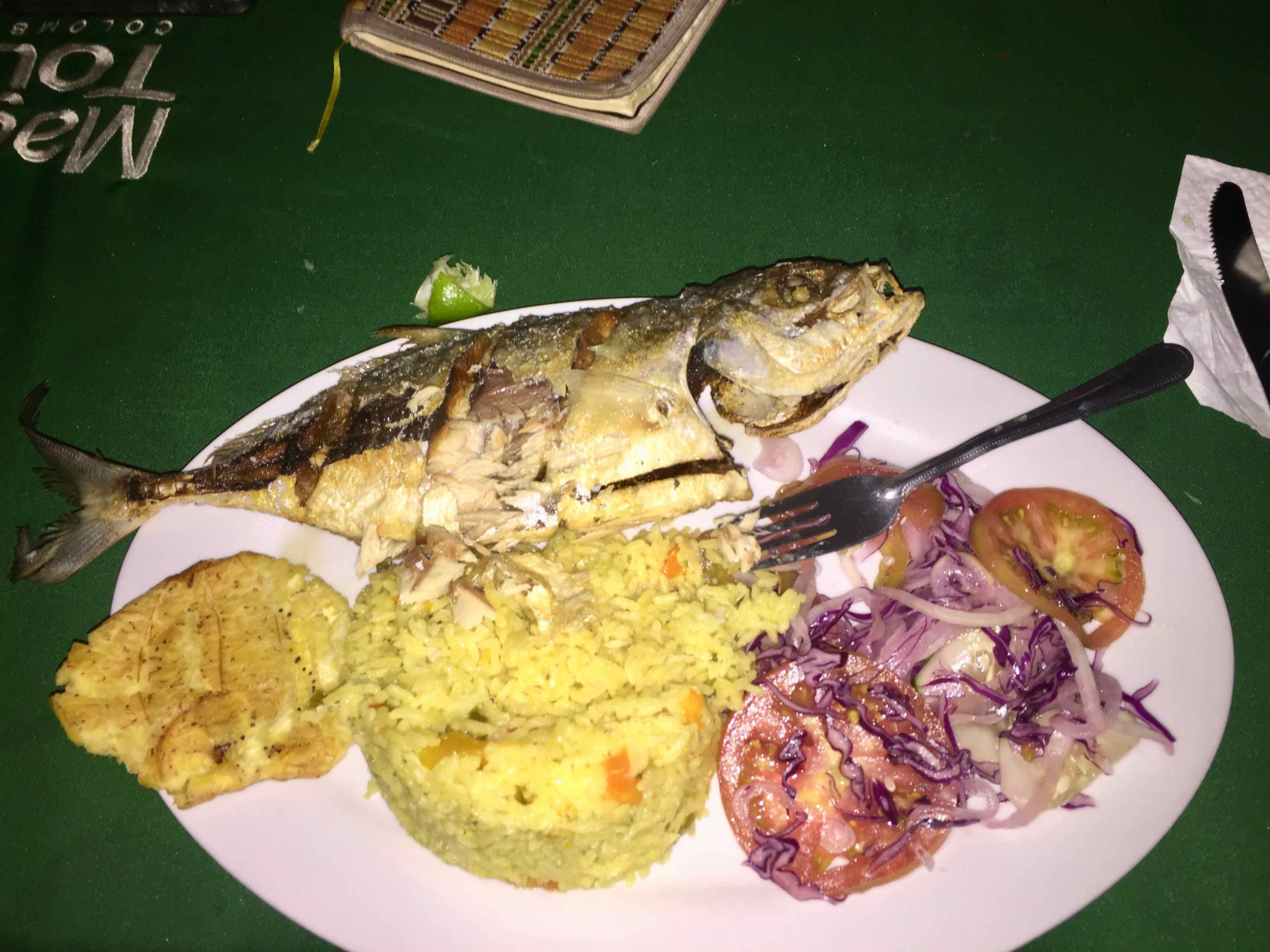
Delicioso and healthy!
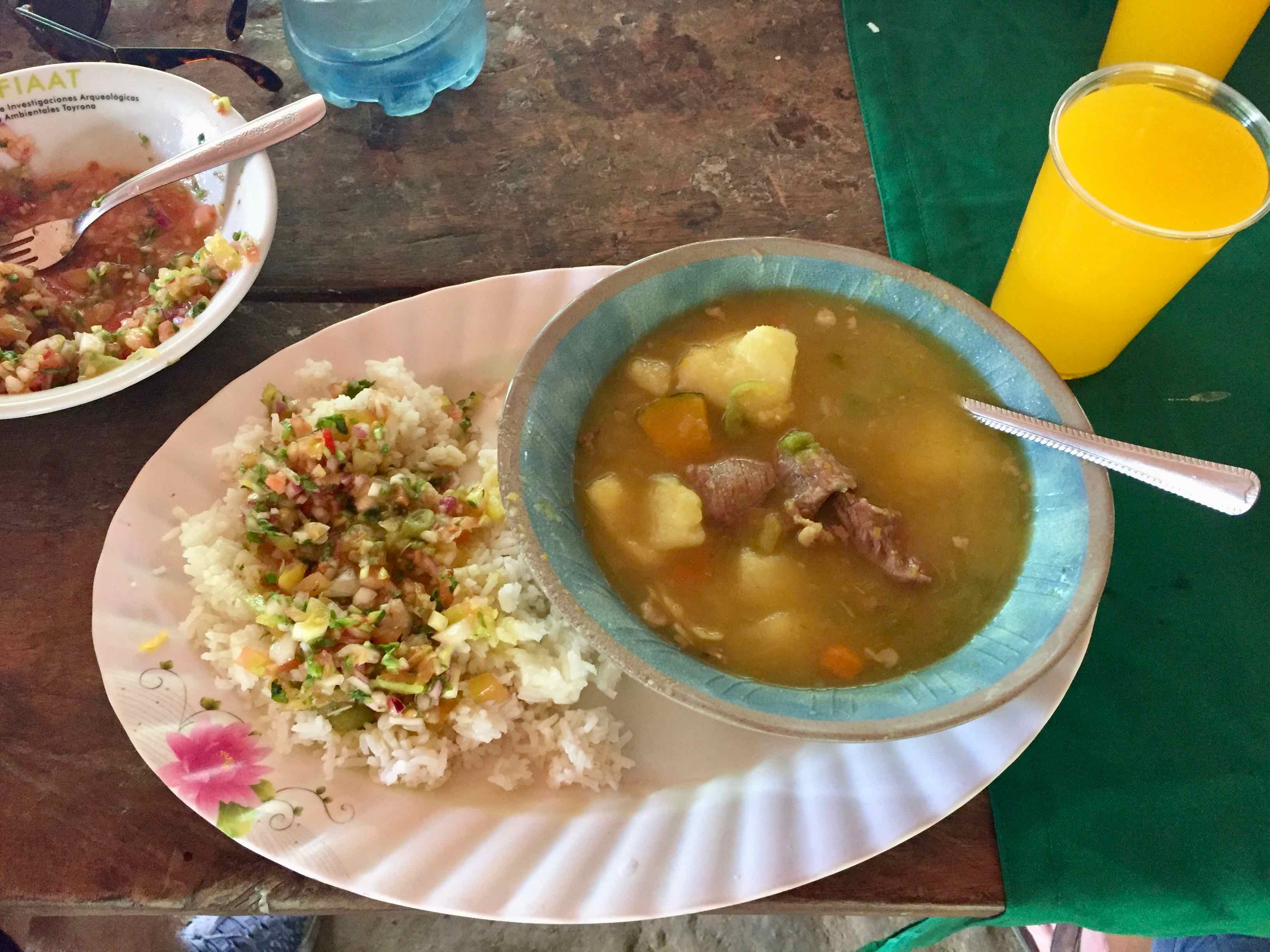
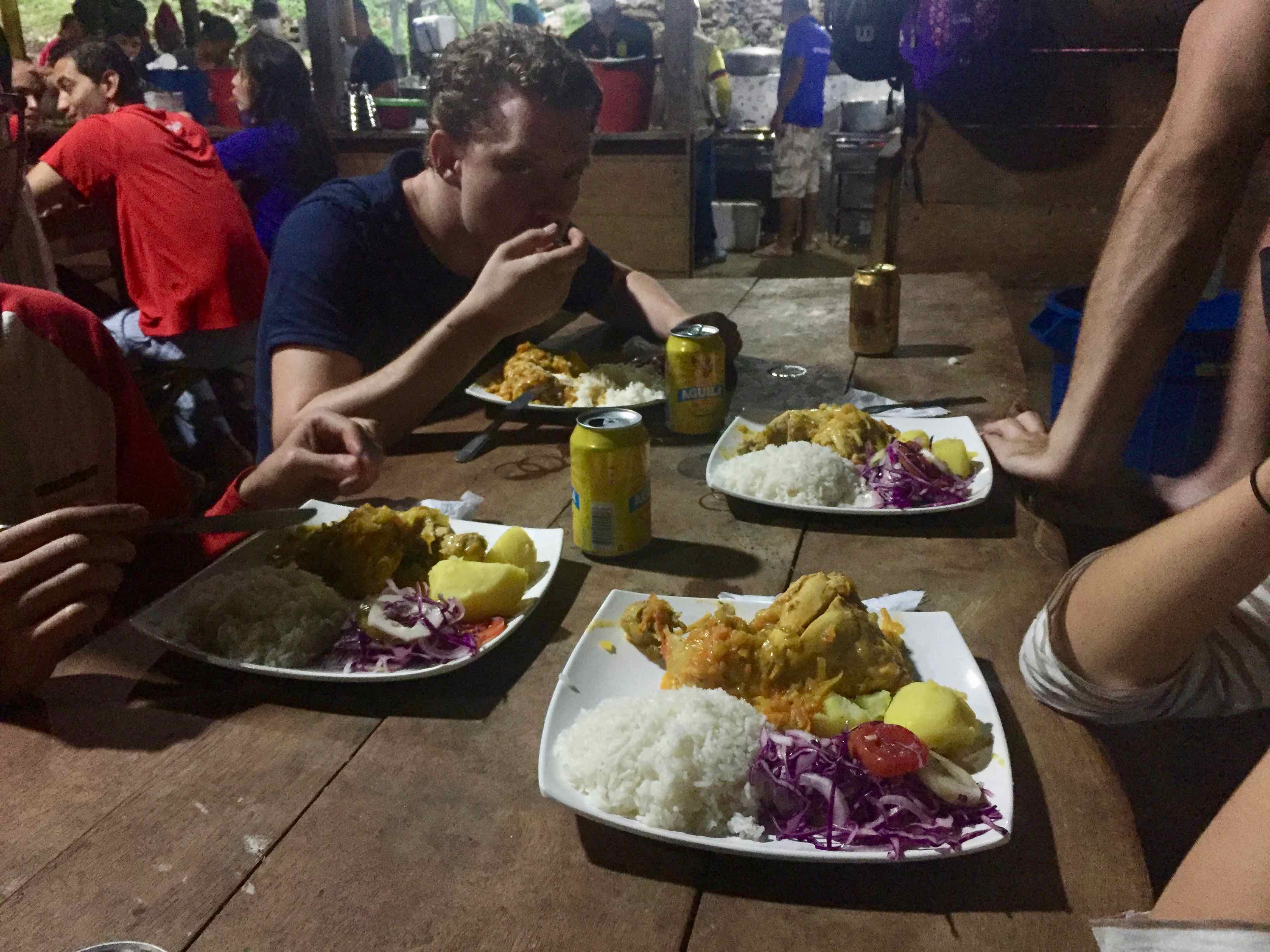
The portions are huge, which is nice after full days on the trail!
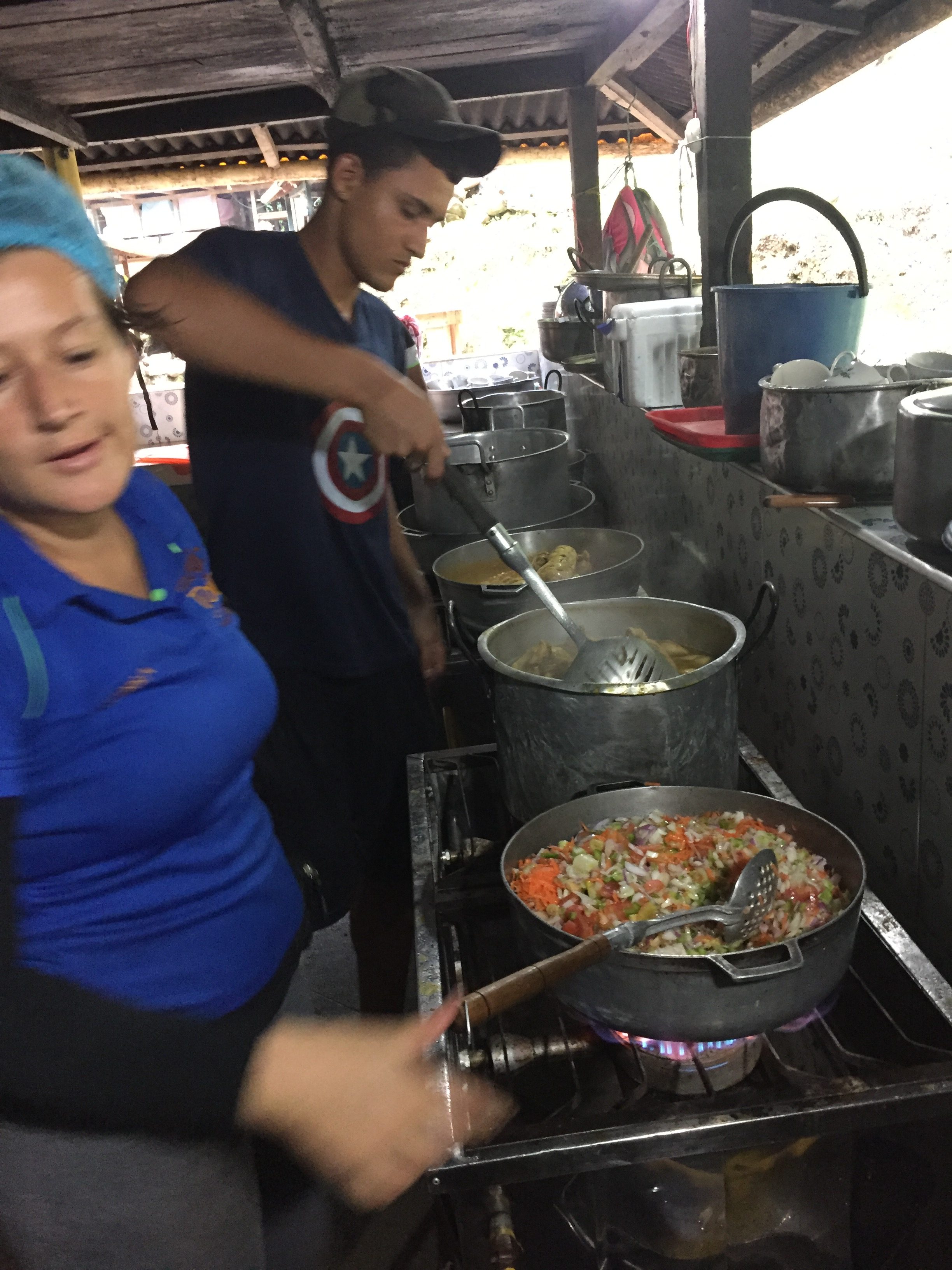
Our cook nearest, another tour company’s in the hat
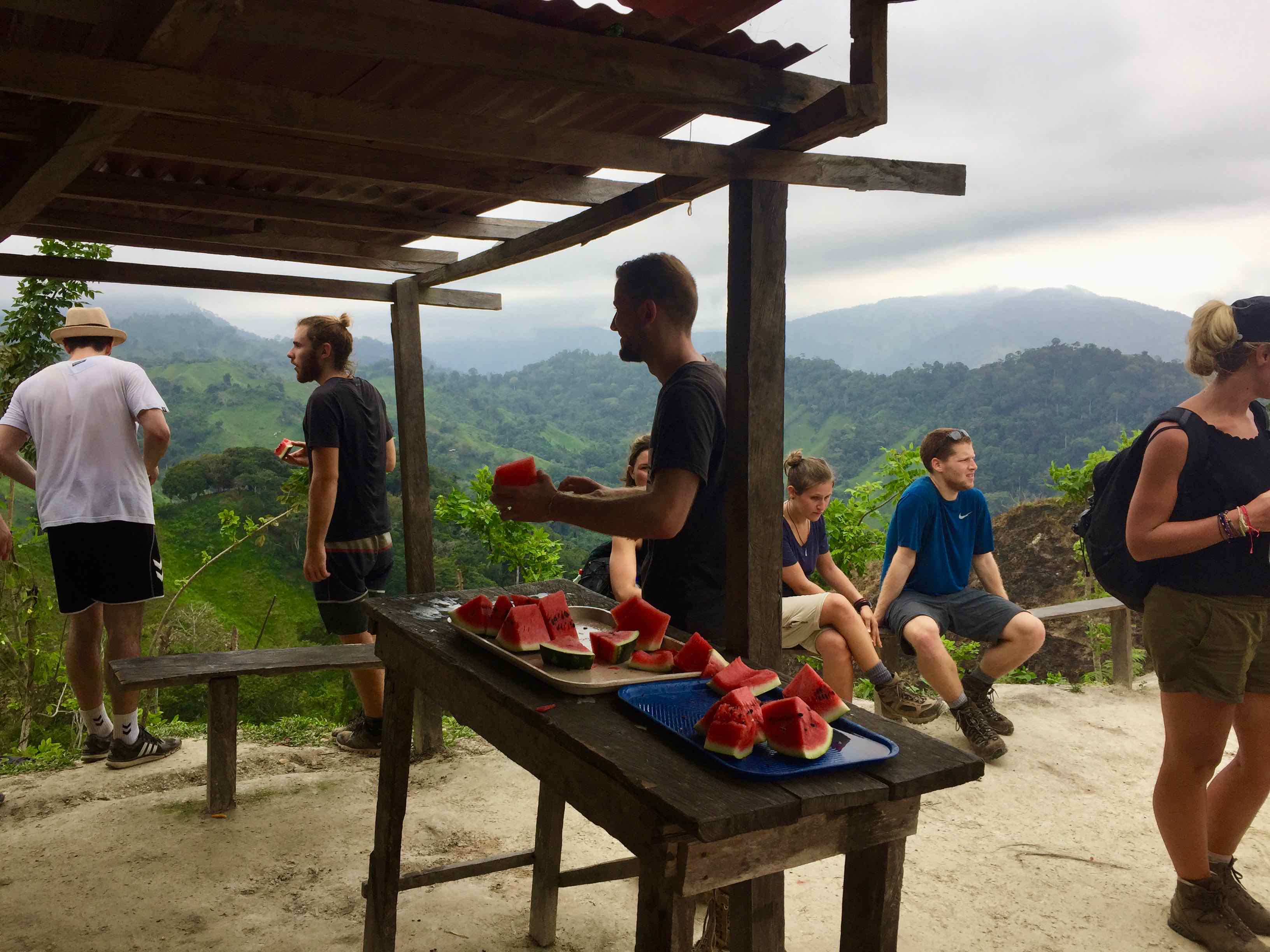
The accommodations
This wasn’t so much of a concern of mine heading into the jungle as my lifestyle on the road sees me sleeping in real beds only a fraction of the time. That being said, I can understand how it may be more important to others considering doing the Lost City trek, so I wanted to cover it as well.
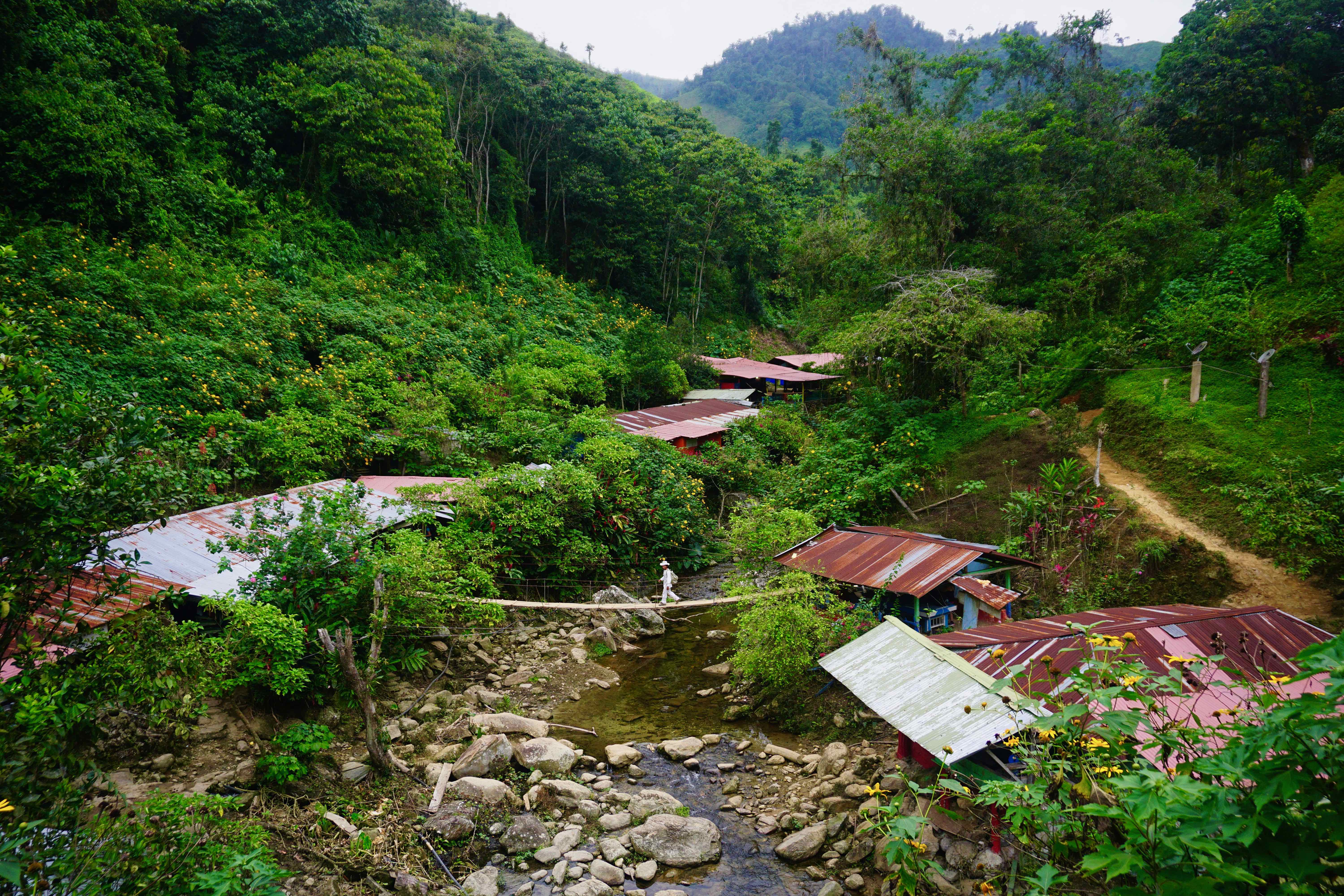
The view of our first camp – “Camp Adan”
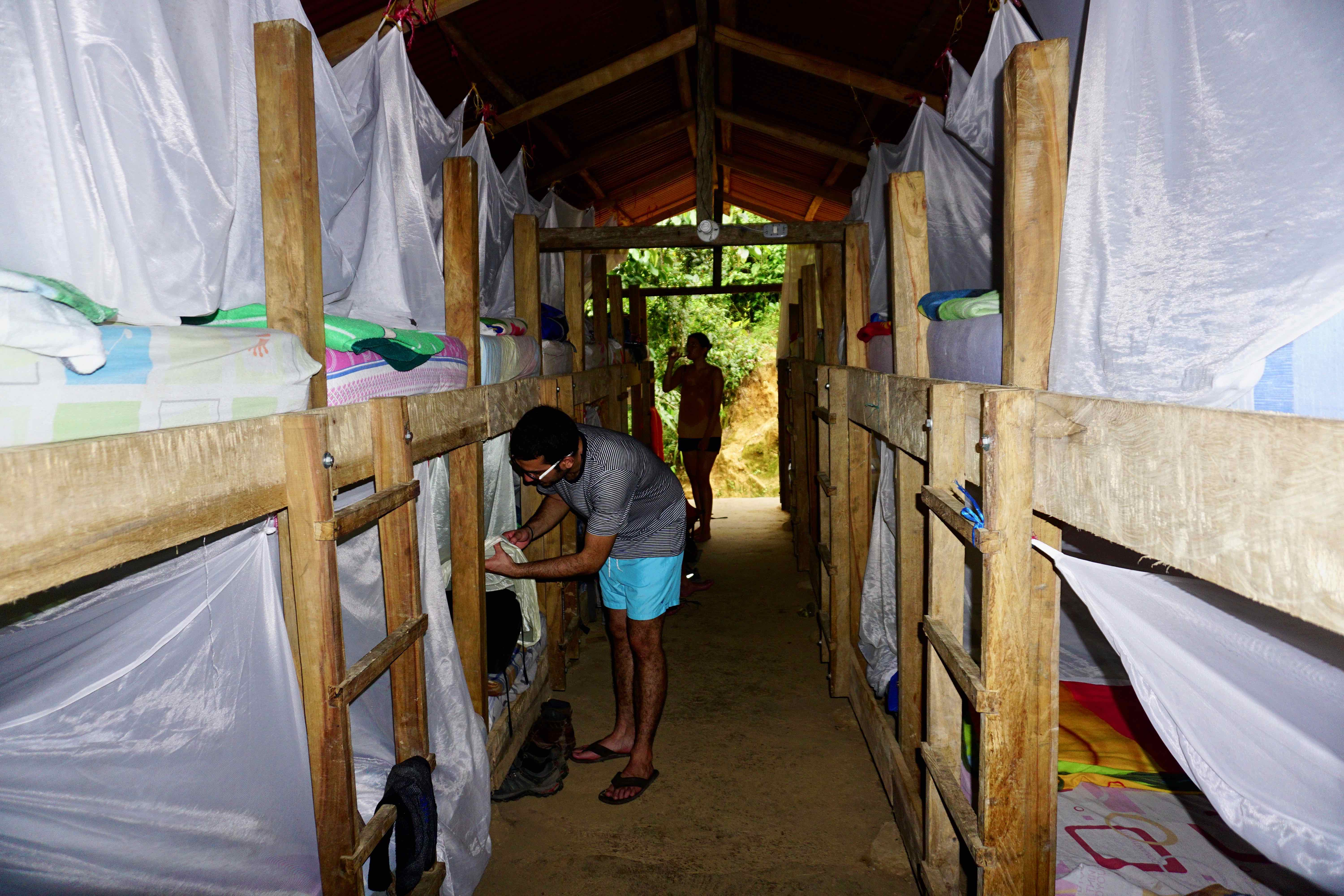
Of course, at the end of the day I was so tired that I could have fallen asleep face down in a mud hole, but even so, I was happy to lay down on the supportive mattresses & soft pillows that were provided.
Bathrooms were well-maintained and clean, with toilet paper, and even hot water showers in some of the camps!
The indigenous cultures
There are 4 different indigenous groups in the Sierra Nevada de Santa Marta: the Kogi, Wiwa, Arhuaco, and Kakuamo. All are direct descendants of the Tayrona, the people group who constructed the Lost City.
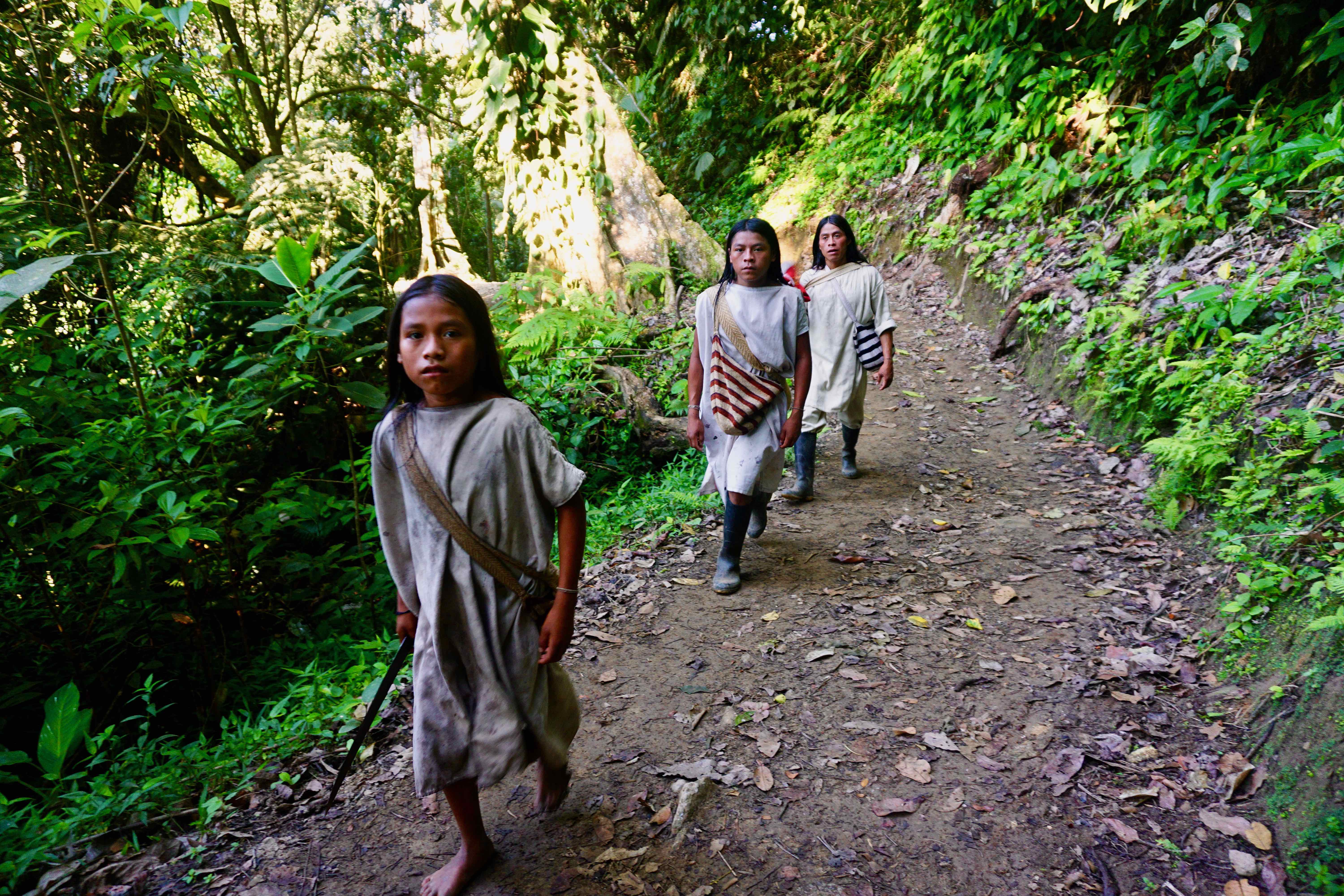
Kogi jungle men doing jungle men things
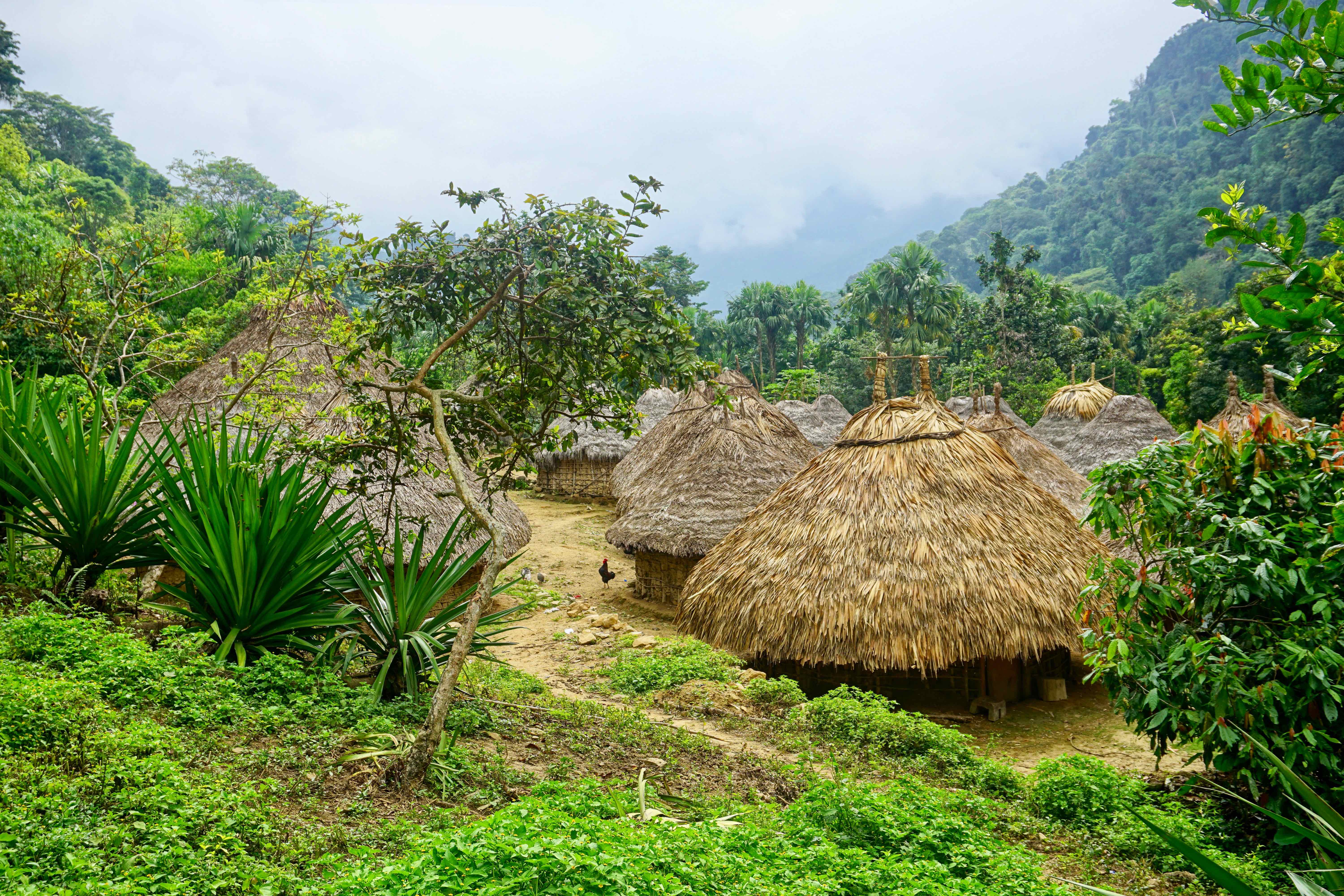
Primitive and beautiful
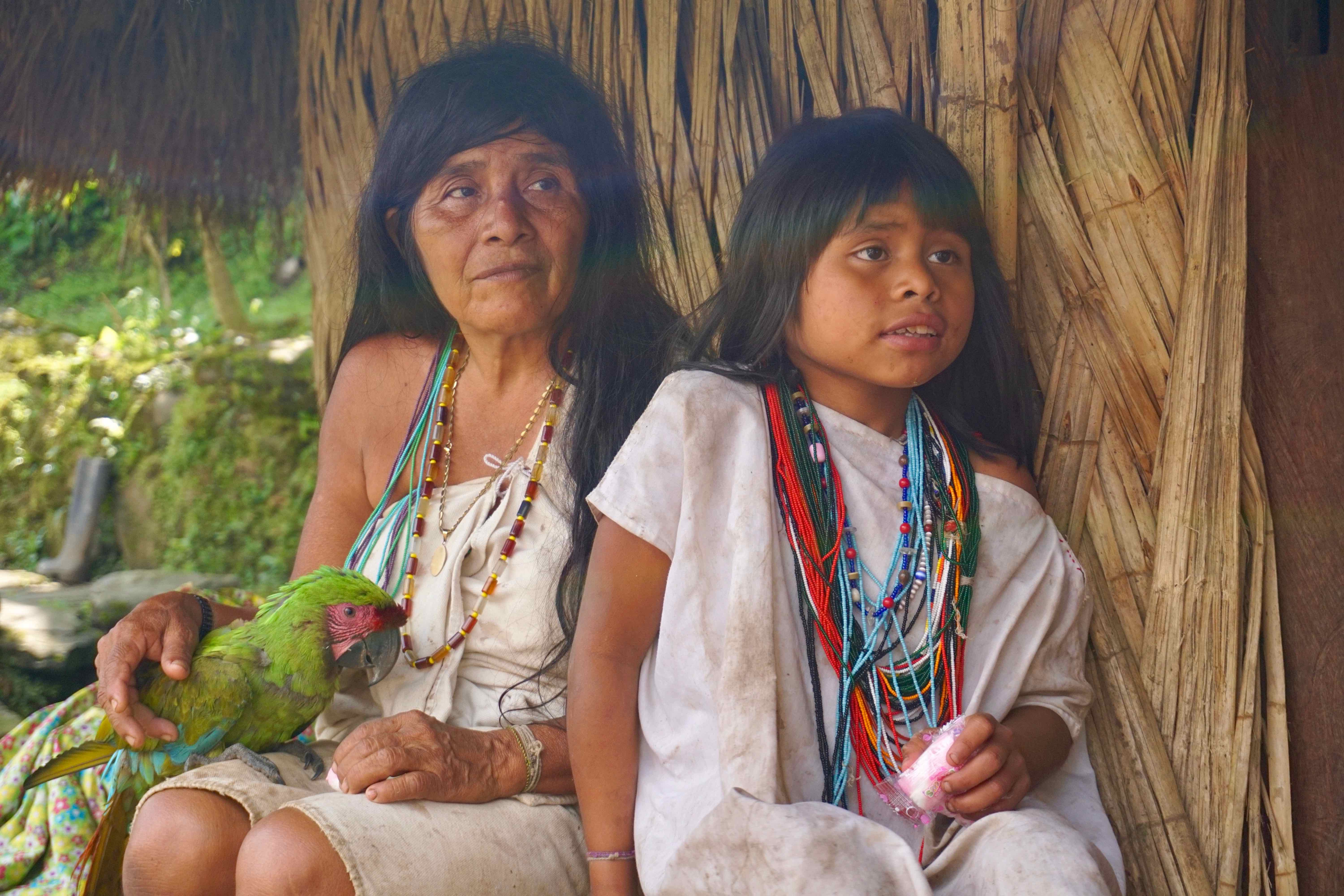
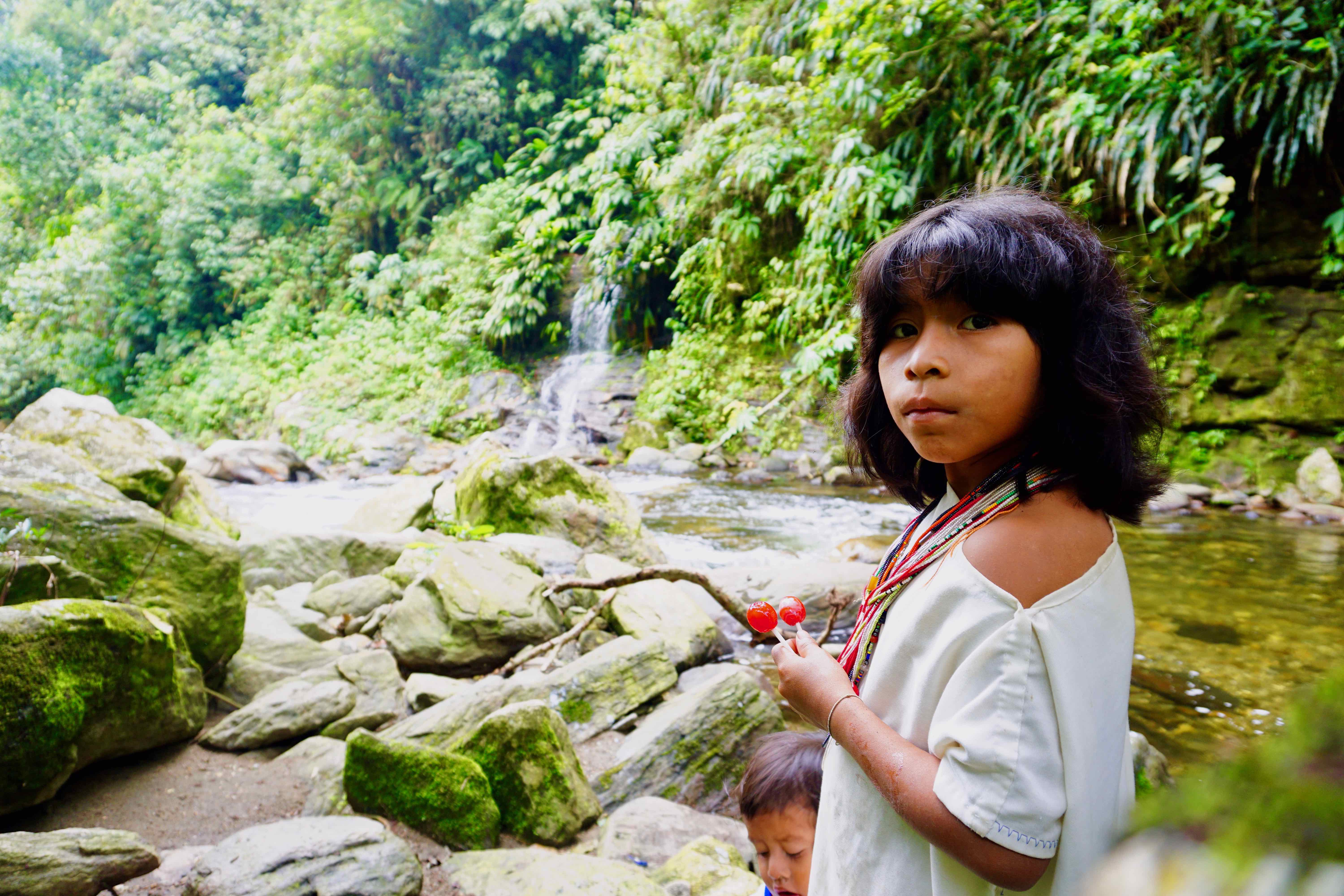
I’m more used to dealing with the indigenous groups of Mayan descent in Mexico & northern C. America, so coming face to face with Kogi & Wiwa people felt really different & wild. Everyone I interacted with was really nice as well!
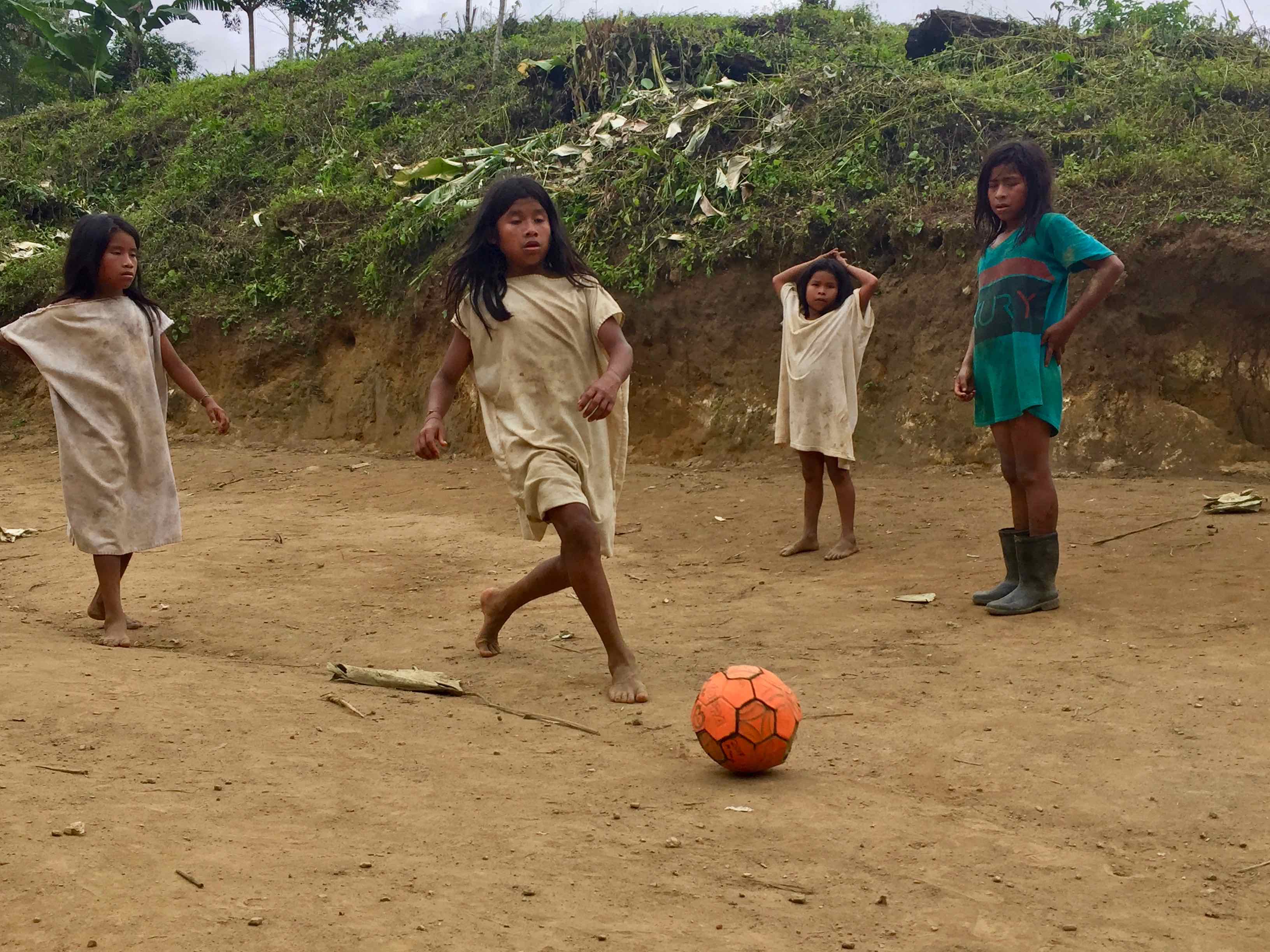
Nin@s playing soccer at one of our snack stops
The swimming holes
Is there anything better than having a natural & refreshing swimming hole in the middle of the jungle to jump in after hours of sweaty hiking? Thank God there are no shortage of river crossings on the hike to La Ciudad Perdida (The Lost City).
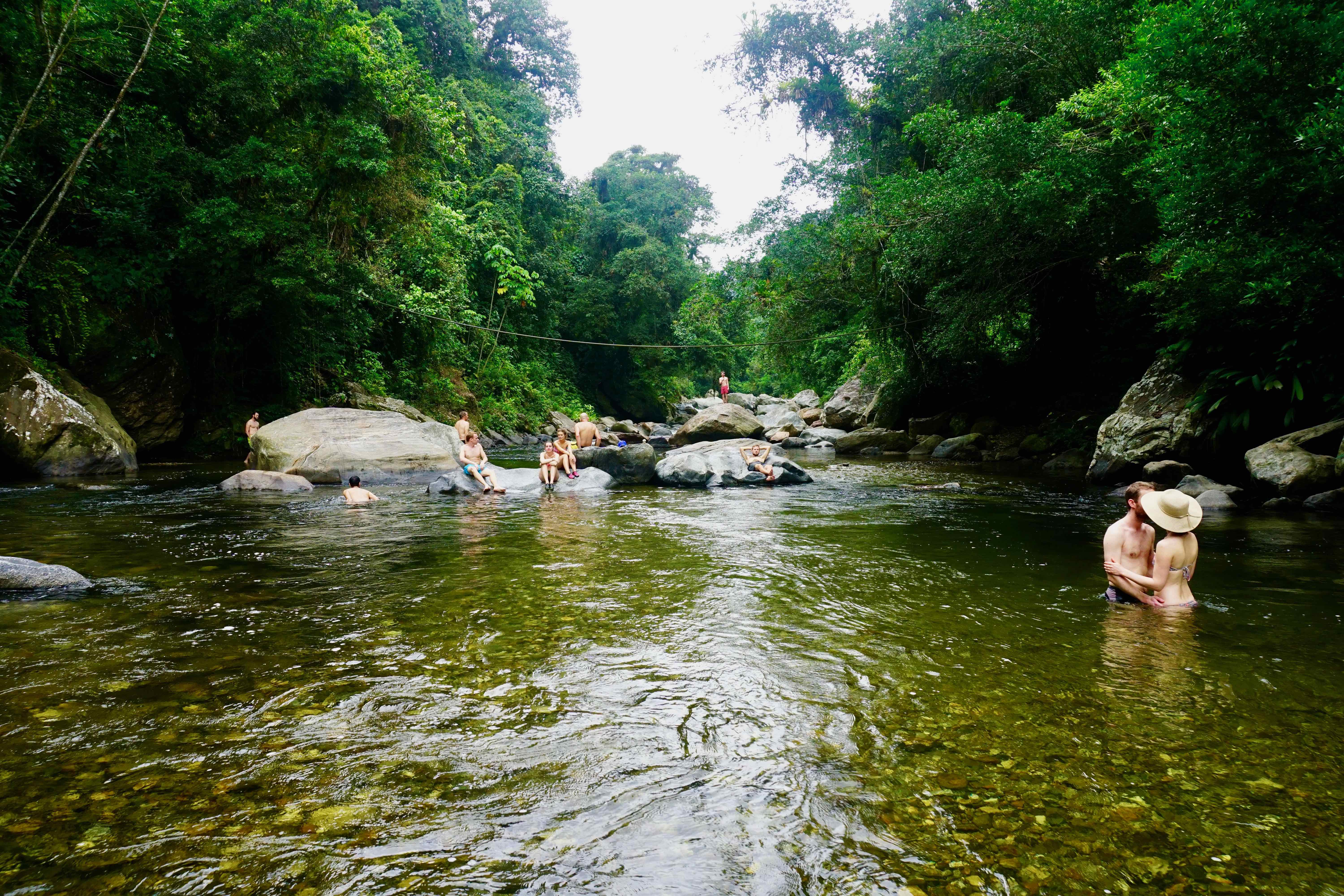
Get a room! Err, a hammock. I mean, a mosquito net bunk bed? …You know what I mean!
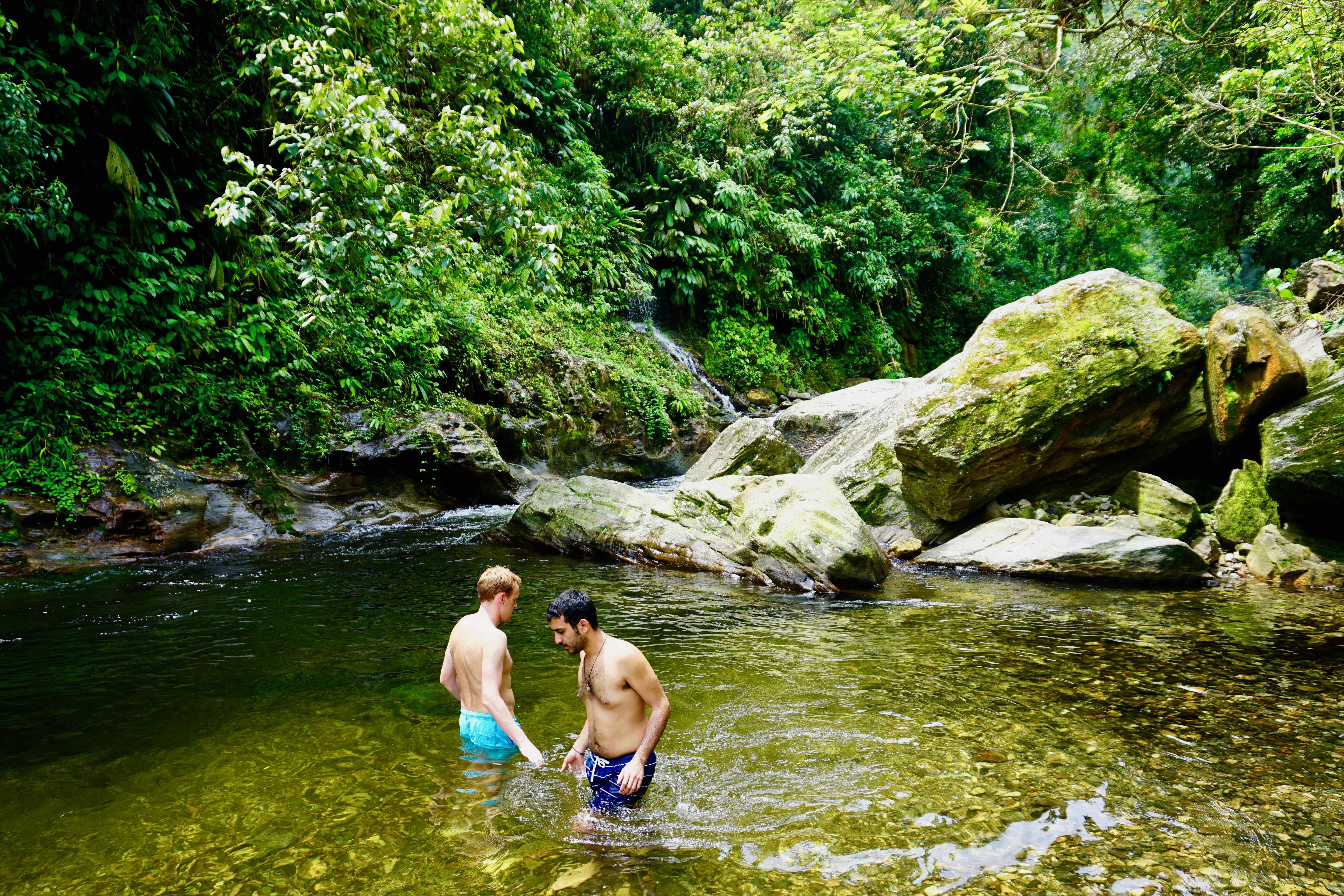
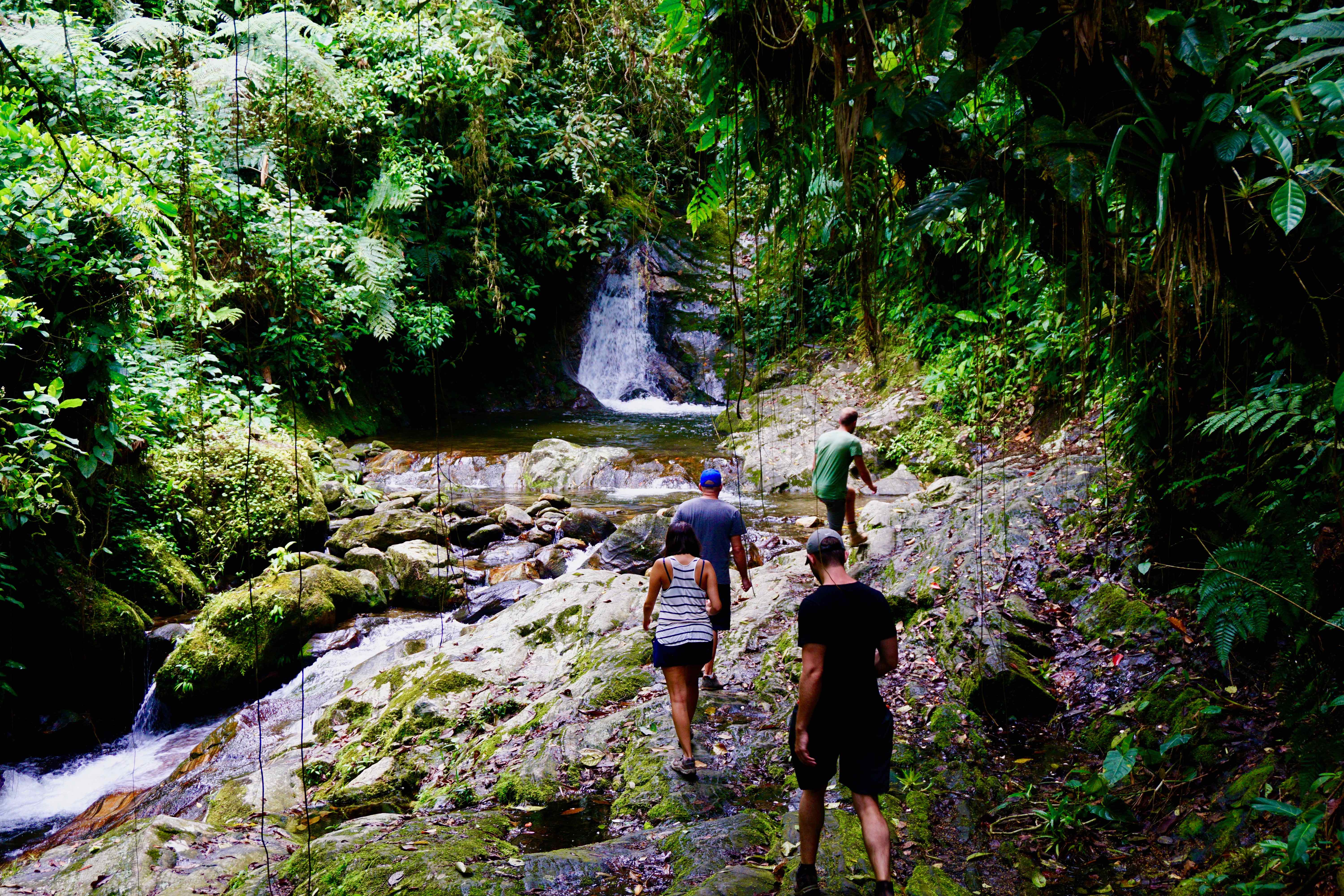
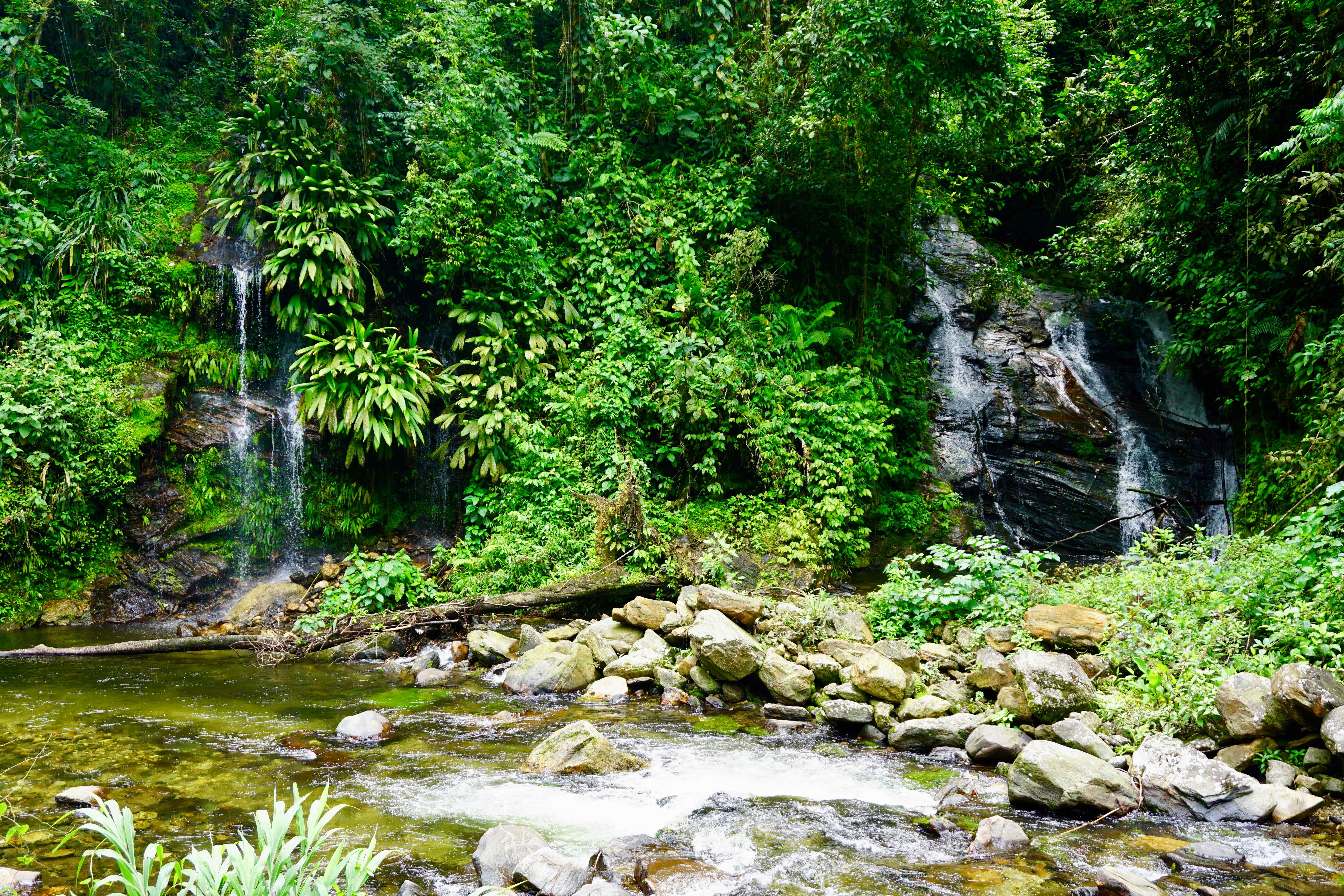
Seriously, every single place that we stopped to swim at had waterfalls cascading into the river – my type of places! Make sure to bring your GoPro!
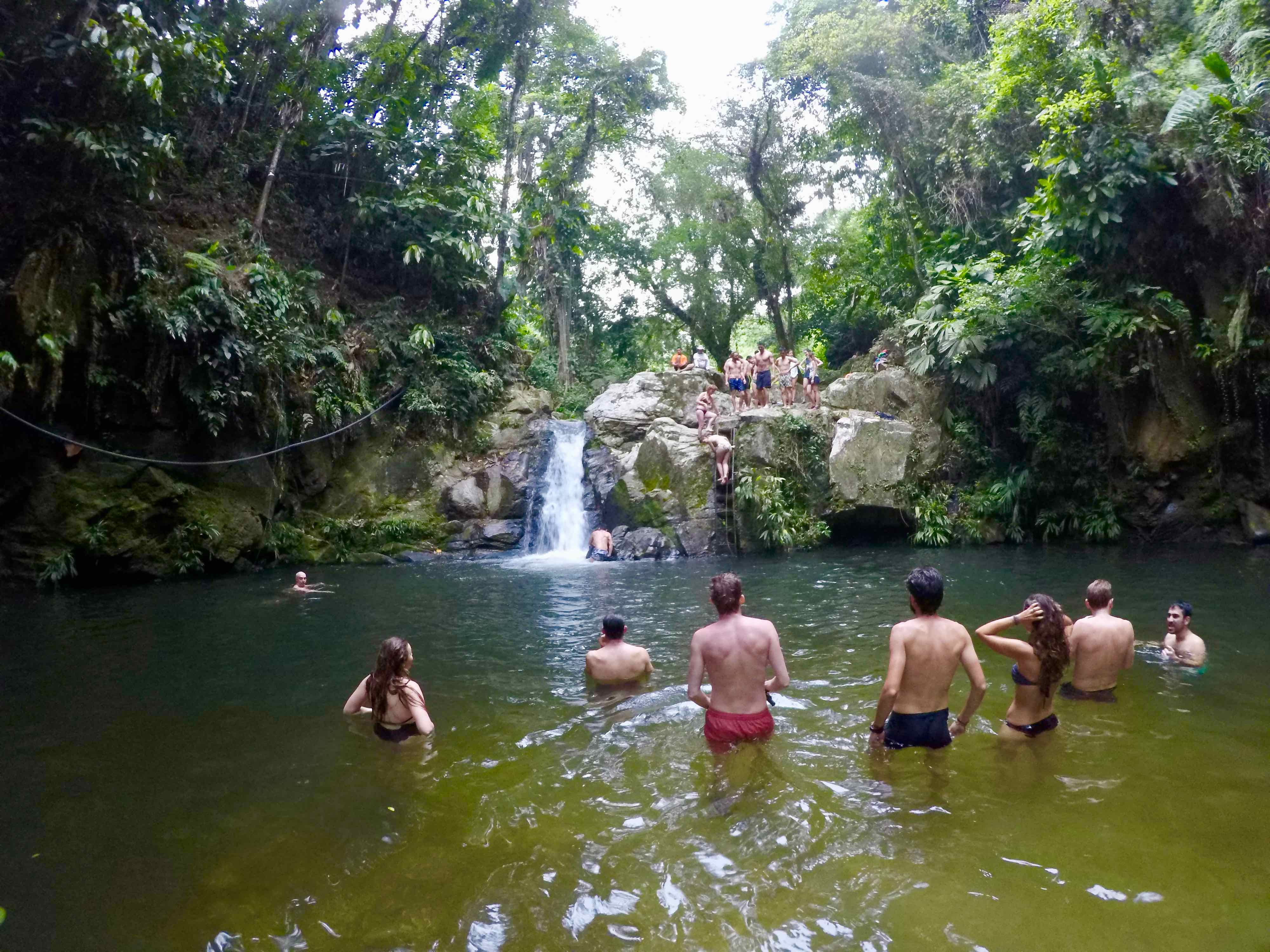
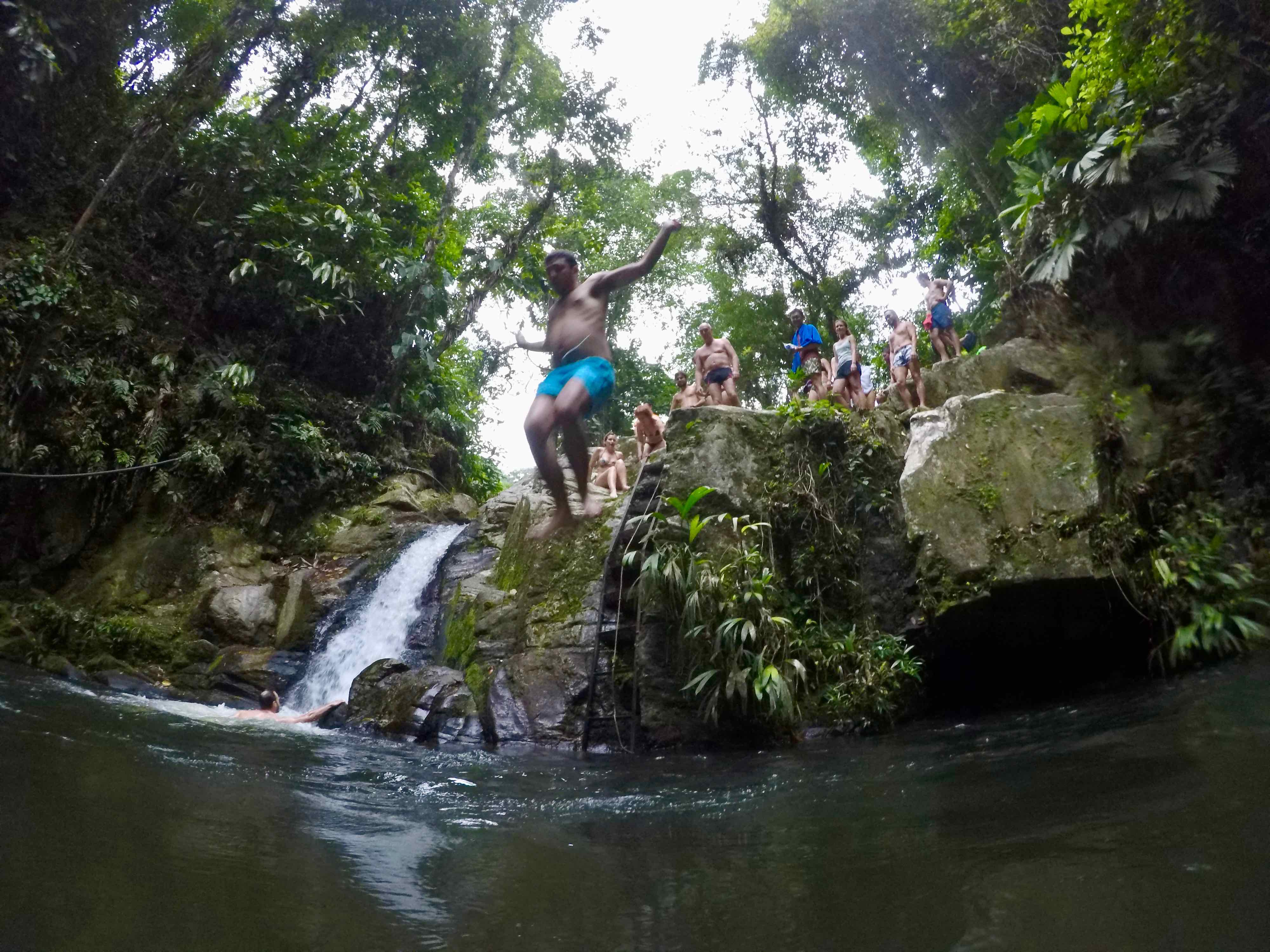
Our knowledgeable guide
It’s so important to have a good guide on trips like this. I always say that without proper knowledge of the background & history, ancient ruins are nothing more than a pile of rocks. I’m glad that I went with the tour company I did, because our tour guide Juan Carlos was EXCELLENT!
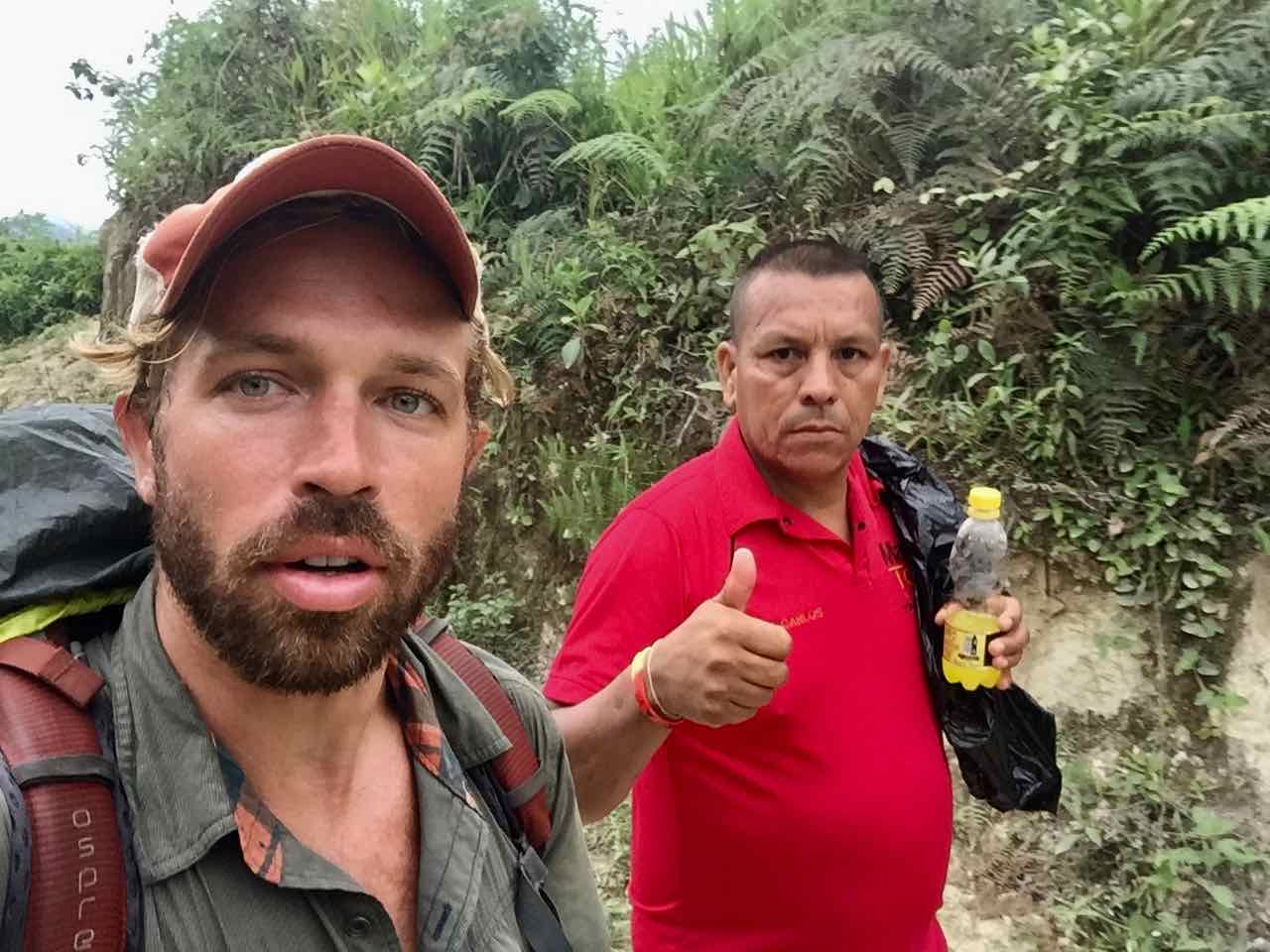
Juan Carlos & I
Juan Carlos was accompanied by a translator named Arnie for all of those who didn’t speak Spanish.
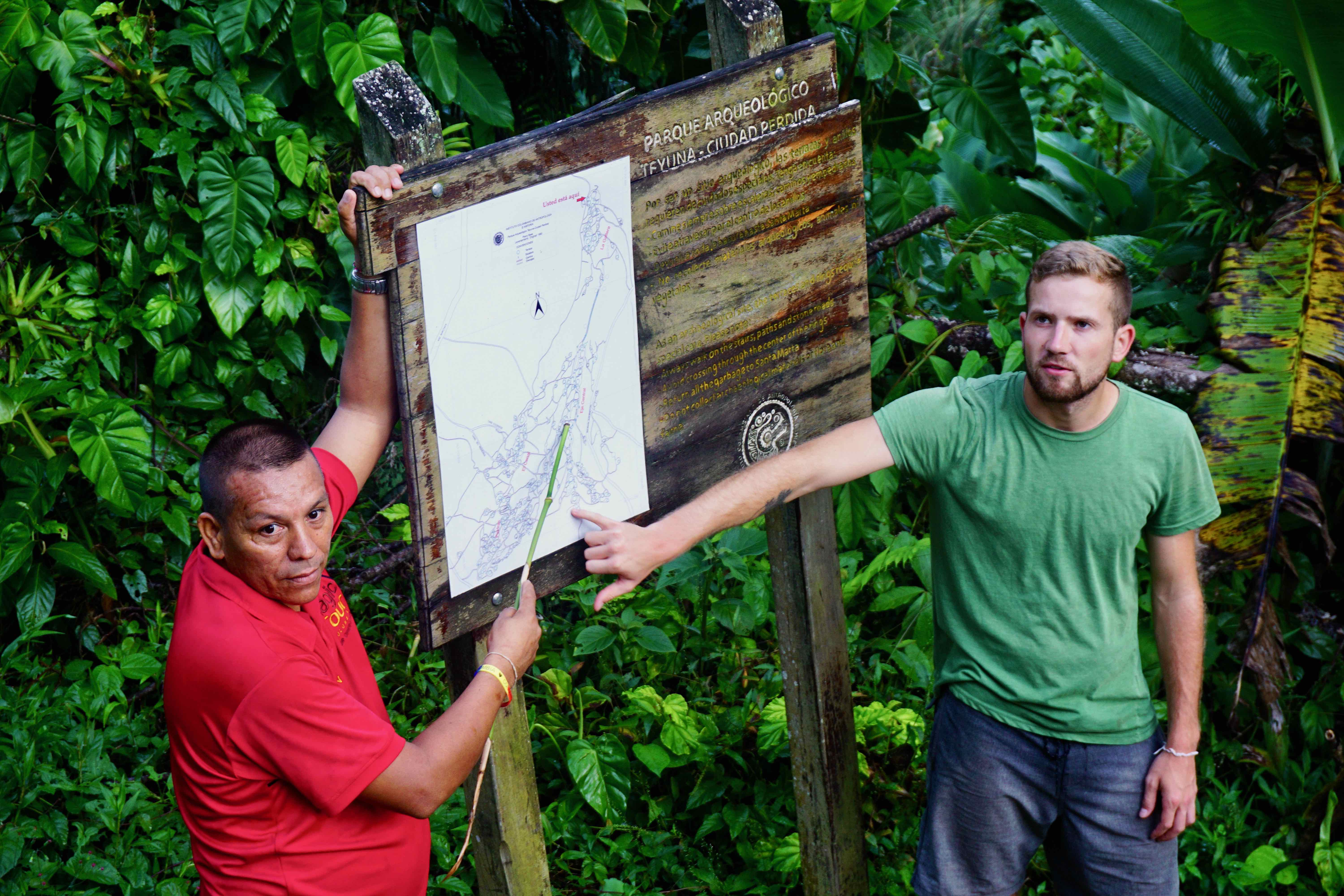
Juan Carlos & Arnie explaining the map upon arriving to the ruins
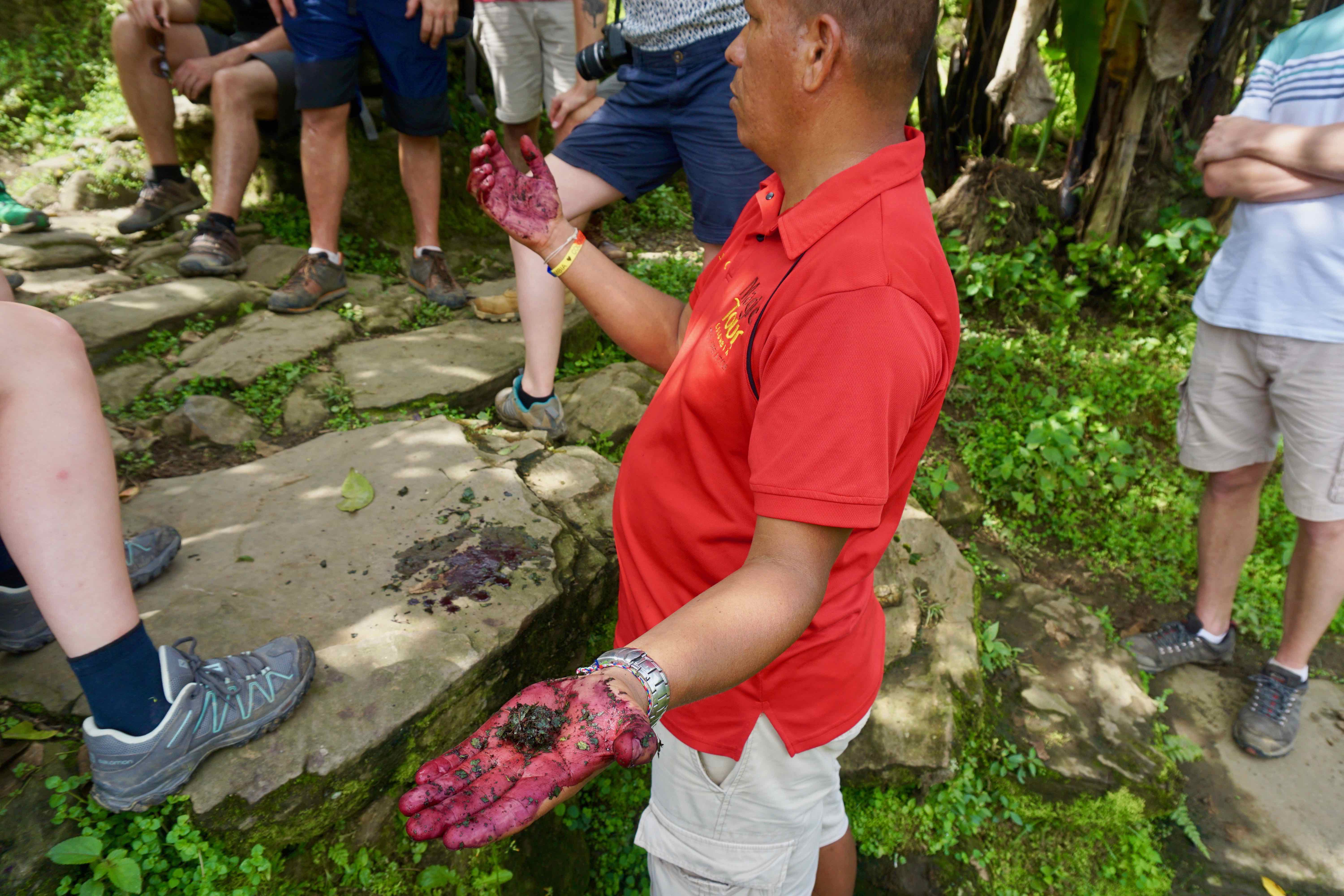
Juan Carlos explaining to us that this particular type of leaf, when ground up, is used for dying clothes (I forgot the name)
Even if Magic Tour Colombia didn’t have everything else on point, I would recommend choosing them as your tour company for this reason alone.
I don’t want to do any mud slinging, but I heard some questionable stories about various guides with other companies. For example, a certain group, which brands itself as the only indigenous-owned tour company, doesn’t offer much of the actual history & facts about the Lost City. They instead tell their groups that the city was “created by the gods.” Another person told me that their guide (yet another company) forgot to sterilize their water and the whole lot of them got sick. Just sayin…
The actual ruins
A quick Google image search of “The Lost City” yields semi-inspiring results. They are mostly populated with slight variations of the same exact photo – the view of the round, green terraces with the mountains in the background. While this is no doubt one of the most scenic shots of the Lost City, it is by no means the extent of the ruins.
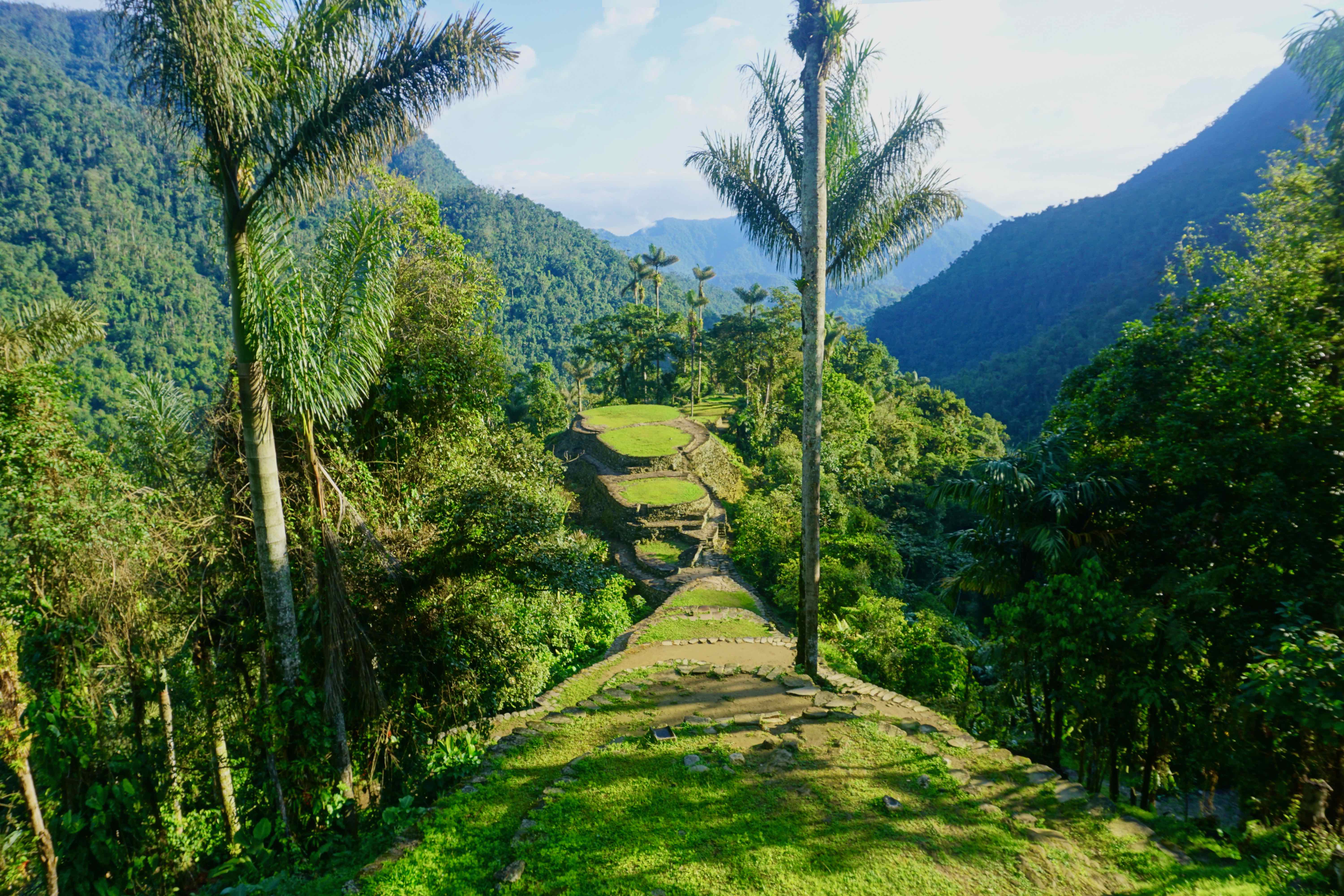
THAT photo (this is my version :-))
However, immediately upon arriving to the ancient 1,000+ stone staircase that leads you from the river’s edge up to the ridge of the mountain where The Lost City begins, it’s apparent that something truly special awaits at the top.
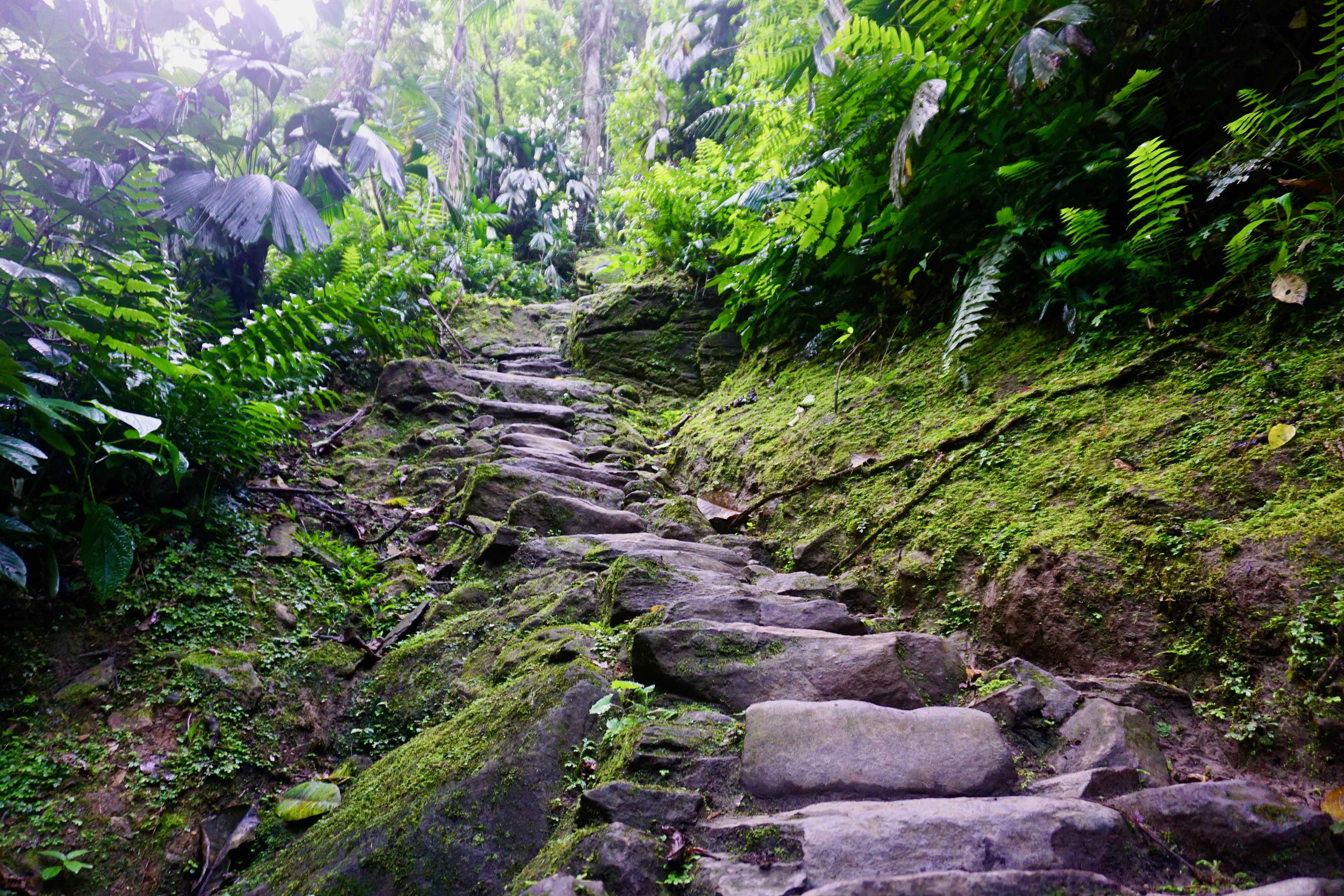
This staircase climbs and climbs, and is a great final buildup before reaching the ruins
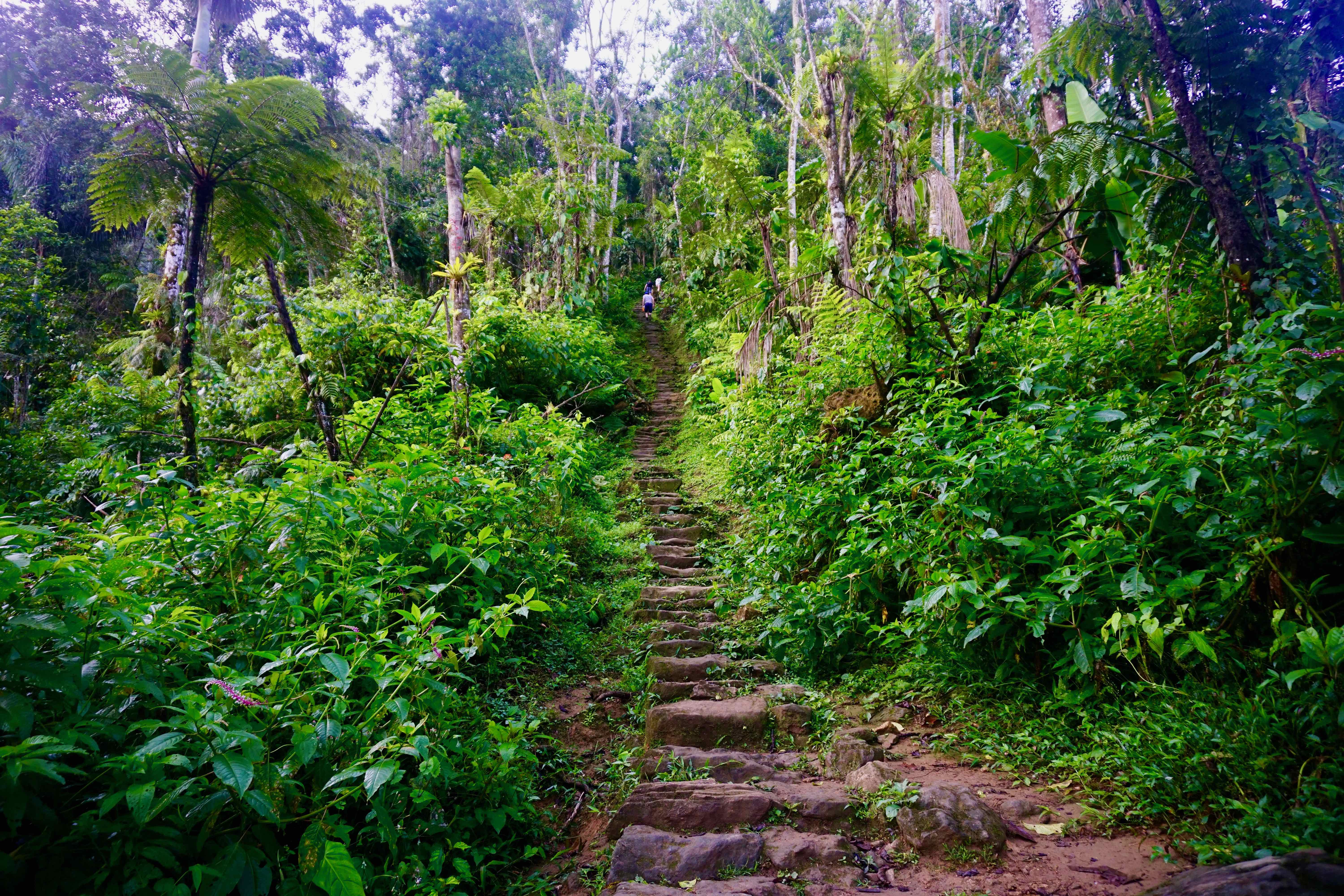
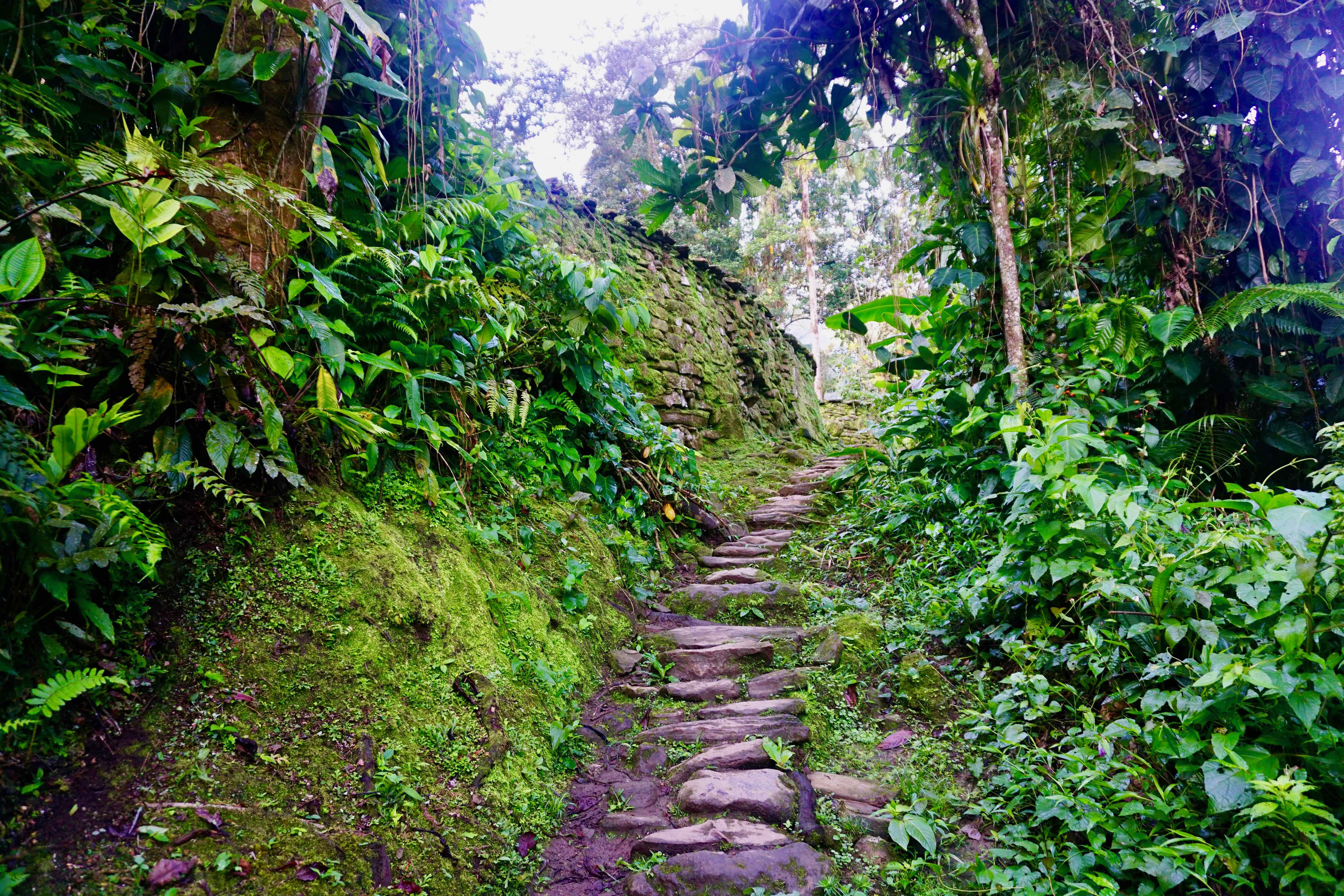
The top of the staircase & start of the ruins
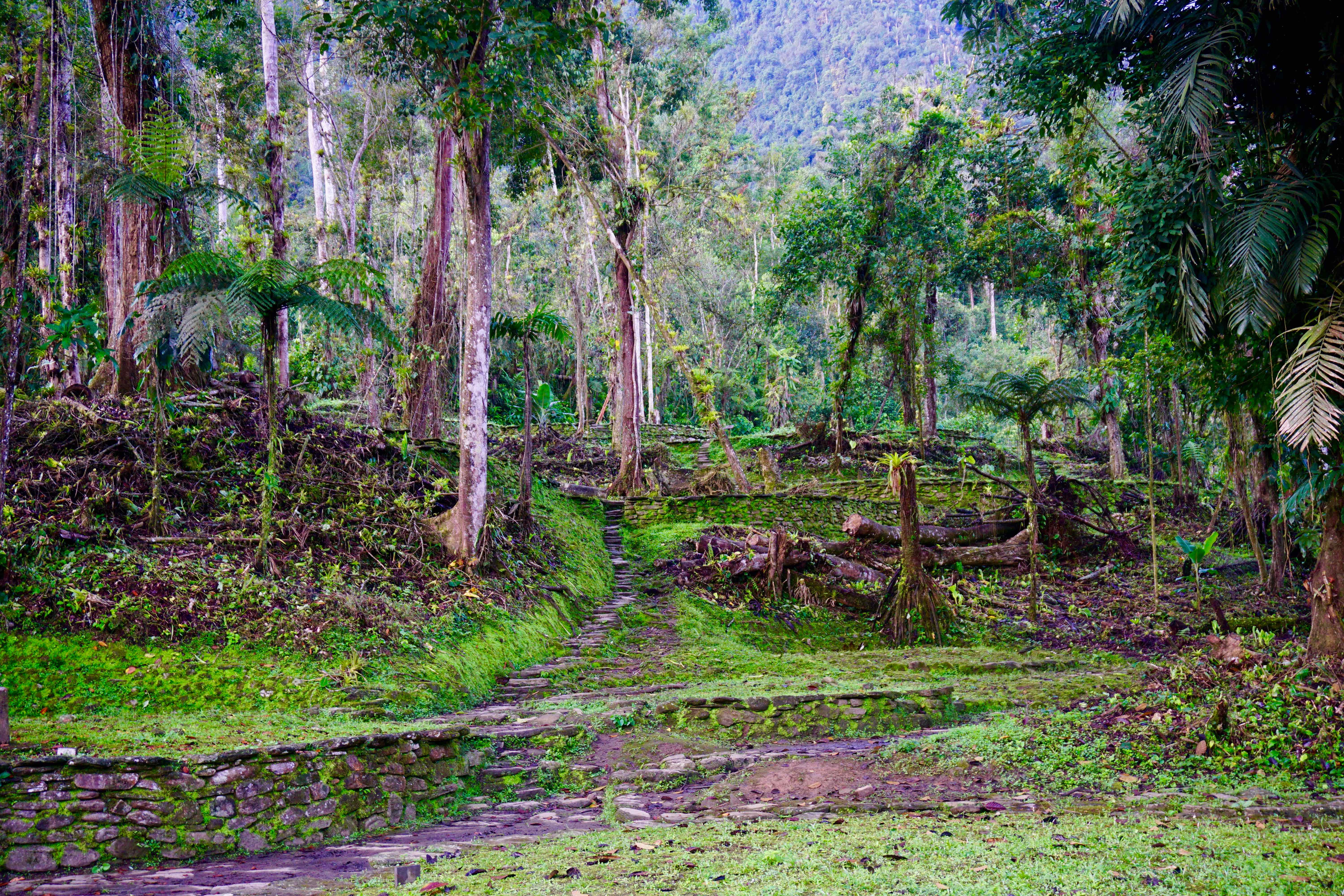
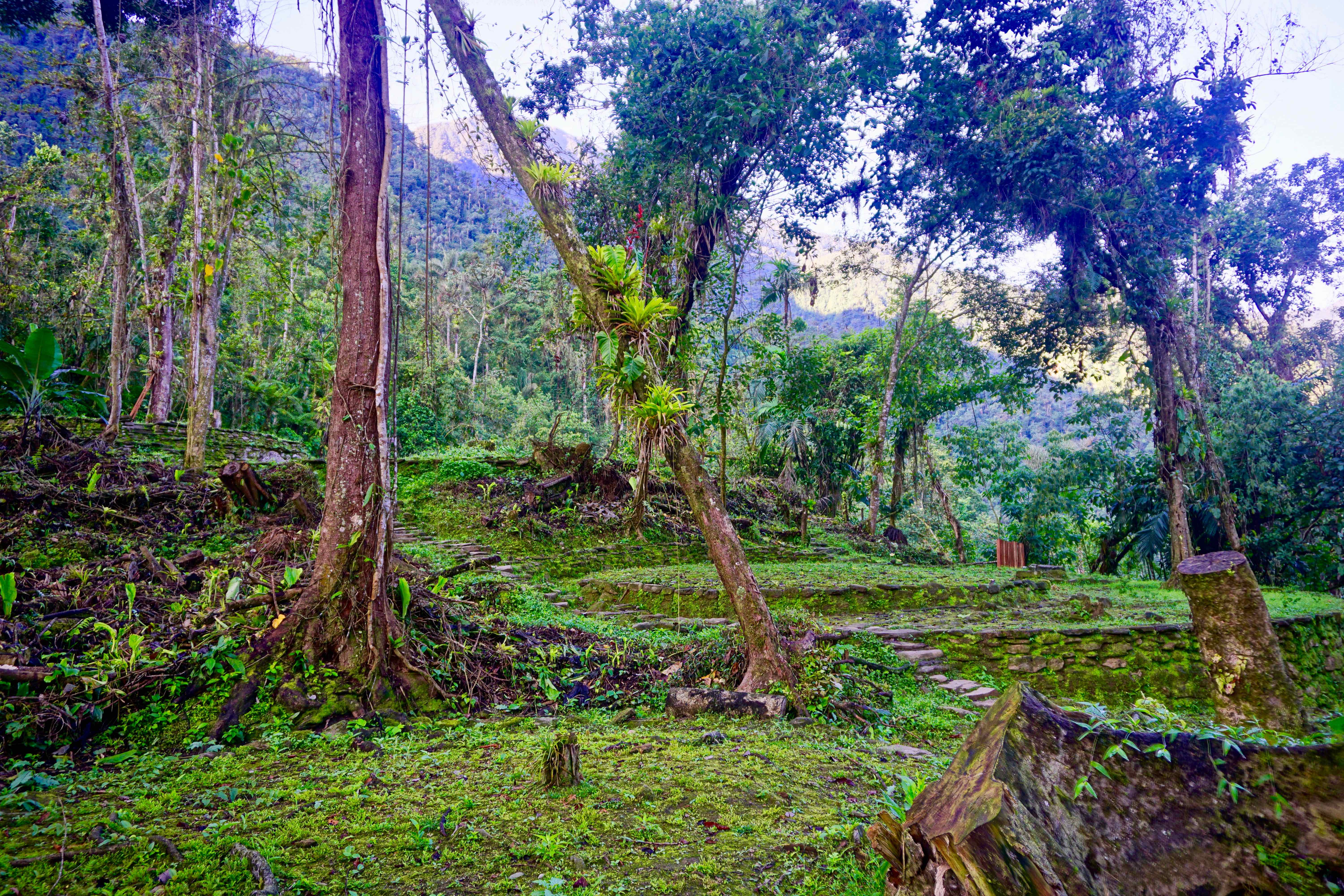
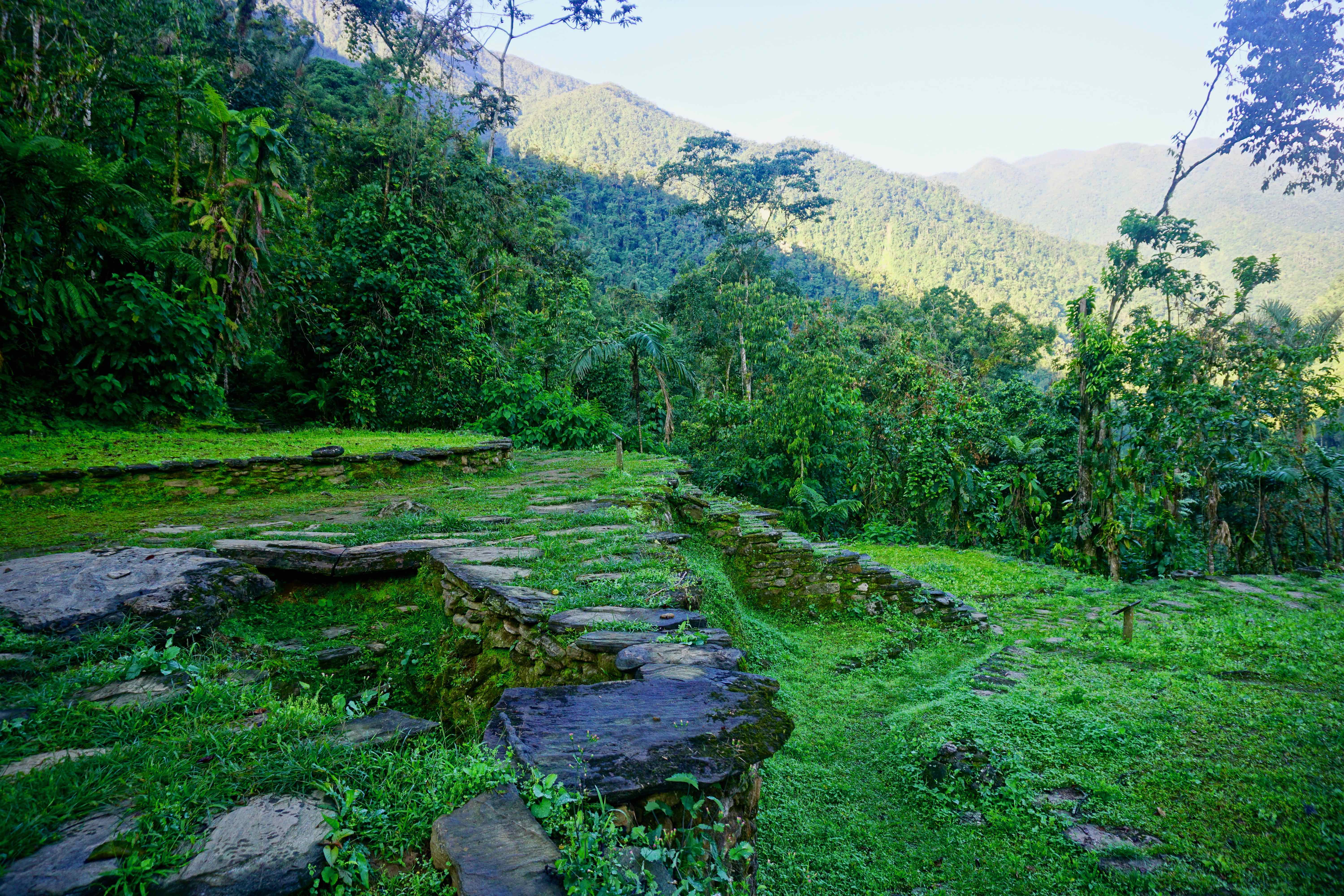
If I had to choose an “OH WOW” moment, it would be when, after climbing yet another mossy staircase, I finally reached the upper levels of the city.
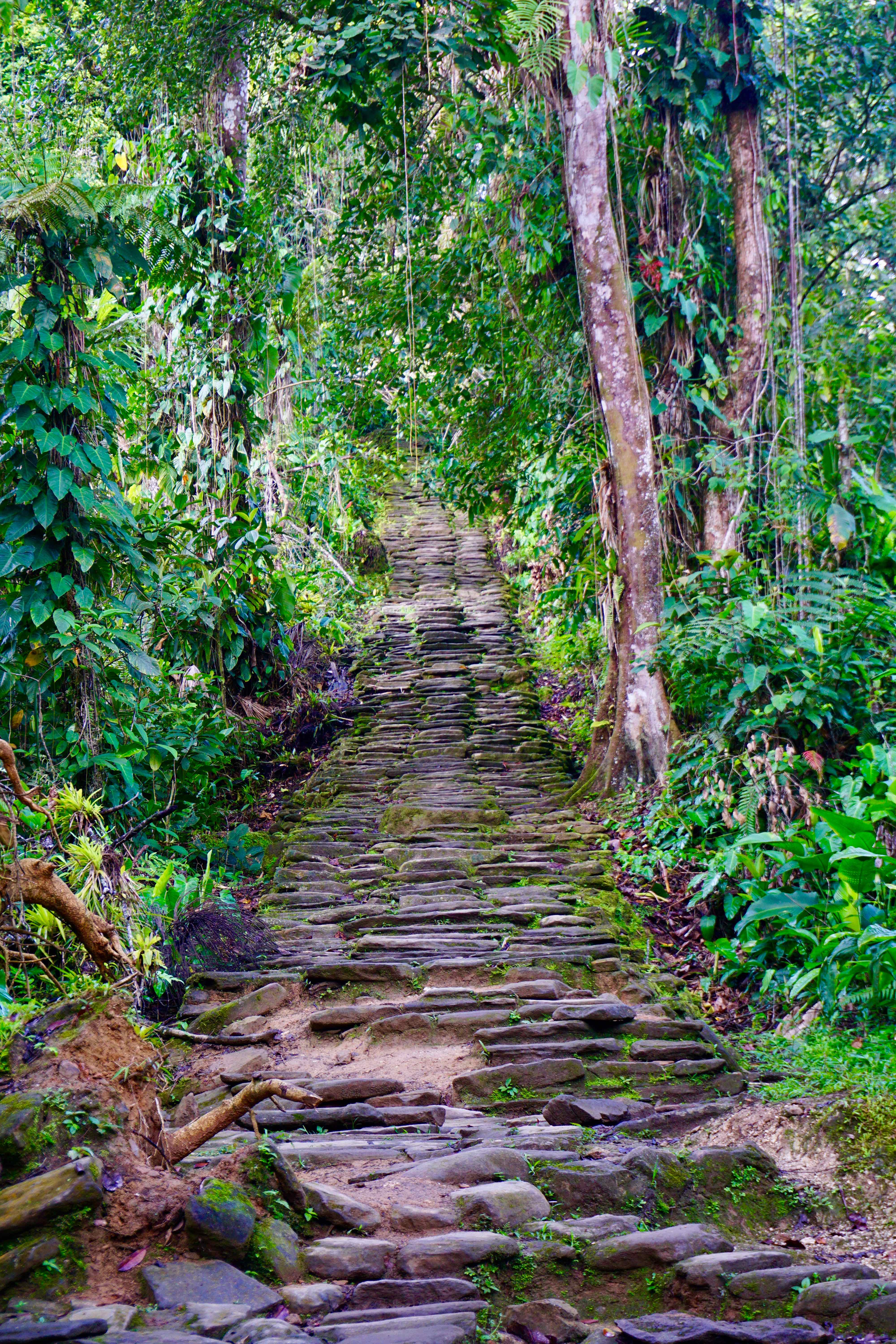
The main terraced area stretched out in front of me, rising level after level up the spine of the mountain, flanked on the left by a cascading waterfall 100’s of feet tall.
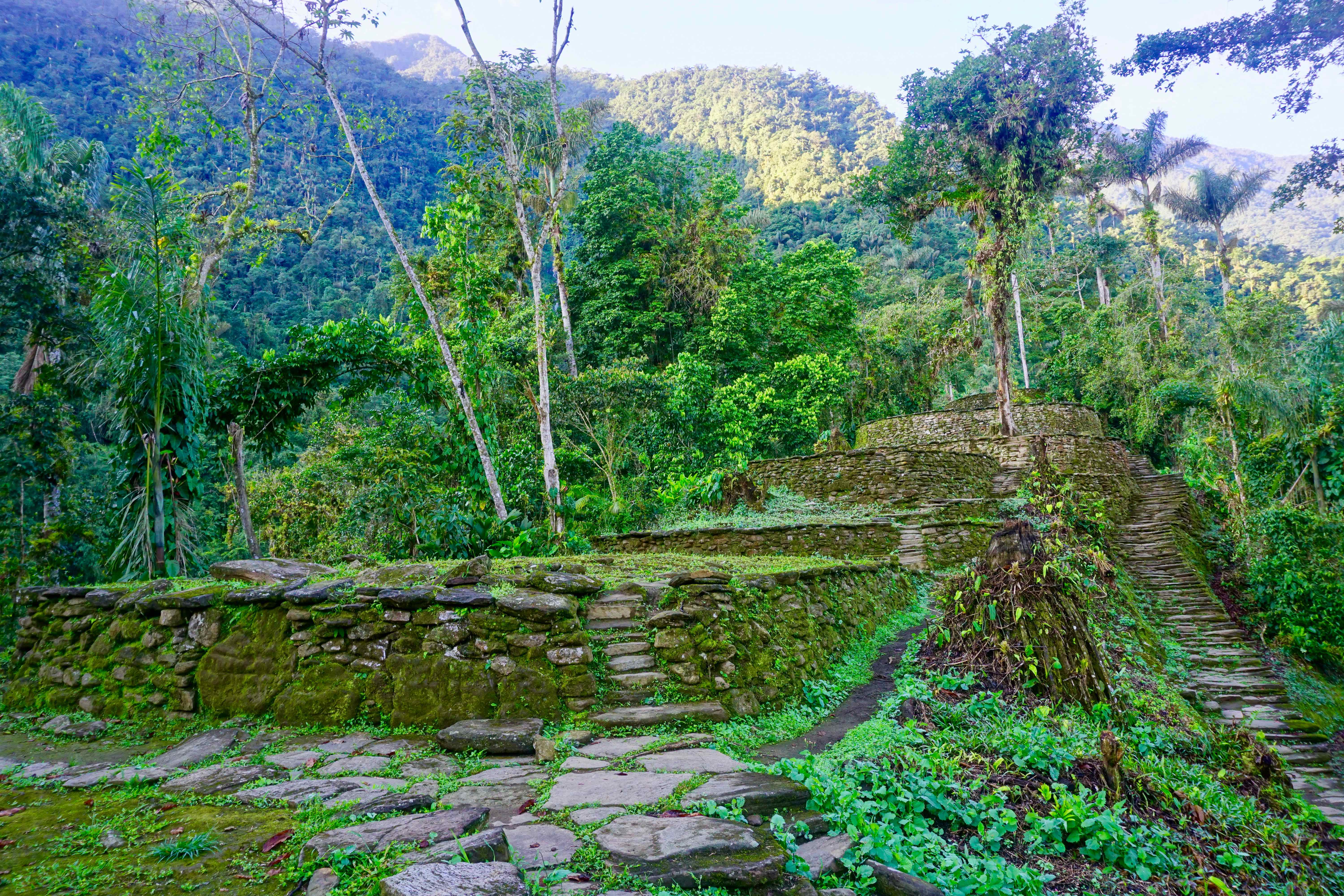
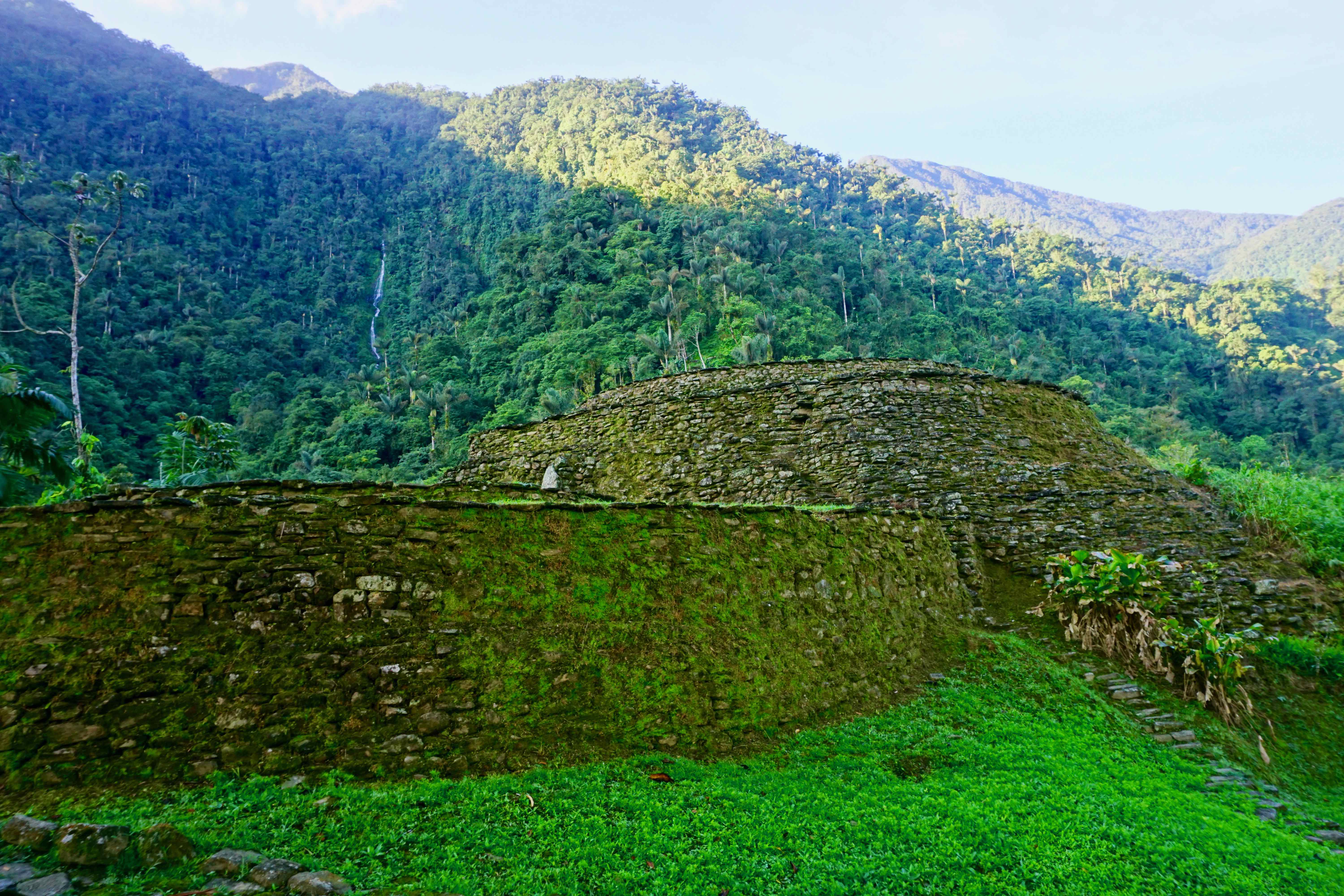
At this exact moment a group of toucans flew through my line of vision and I was instantly transported back in time to the peak of the Tayrona civilization. The buildings reconstructed themselves before my eyes, the bustling city center of commerce came to life with its teeming masses of people, bartering & negotiating, and music filled the air. I seriously lost myself for a moment – what an enchanting & mystical place!
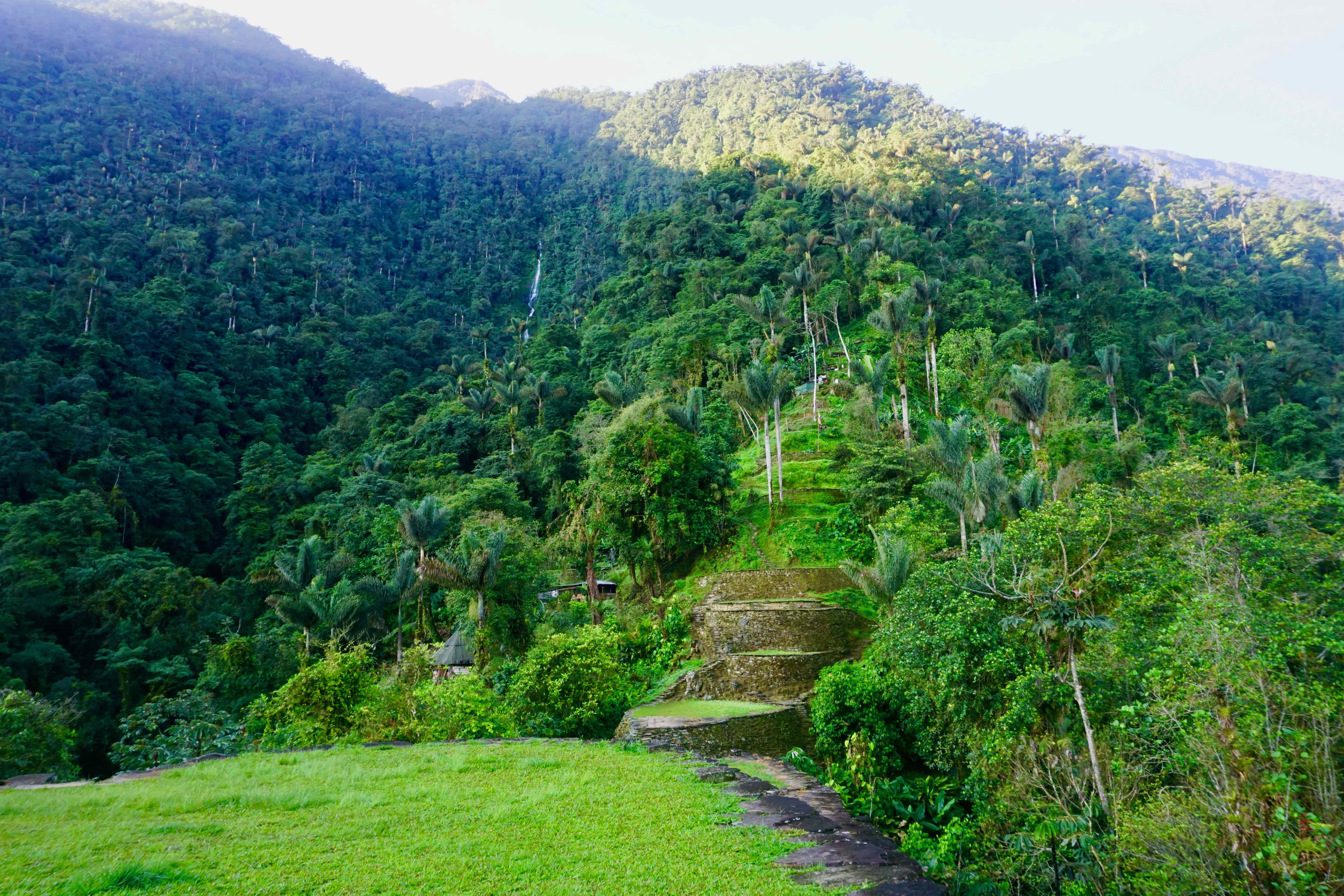
The ruins sit on 86 acres of jungly mountainside, the vast majority of which still has not been uncovered and restored. Apparently, 169 terraces have been excavated, while many more, buried under centuries of jungle overgrowth, still haven’t seen the light of day. The extent of the excavated city consists of multi-level foundations of ancient homes, plazas, & temples that hug the mountainside as they fan out & expand from the main area. Our tour spent almost 3 hours wandering through the Lost City (La Ciudad Perdida), and we could have spent even longer.
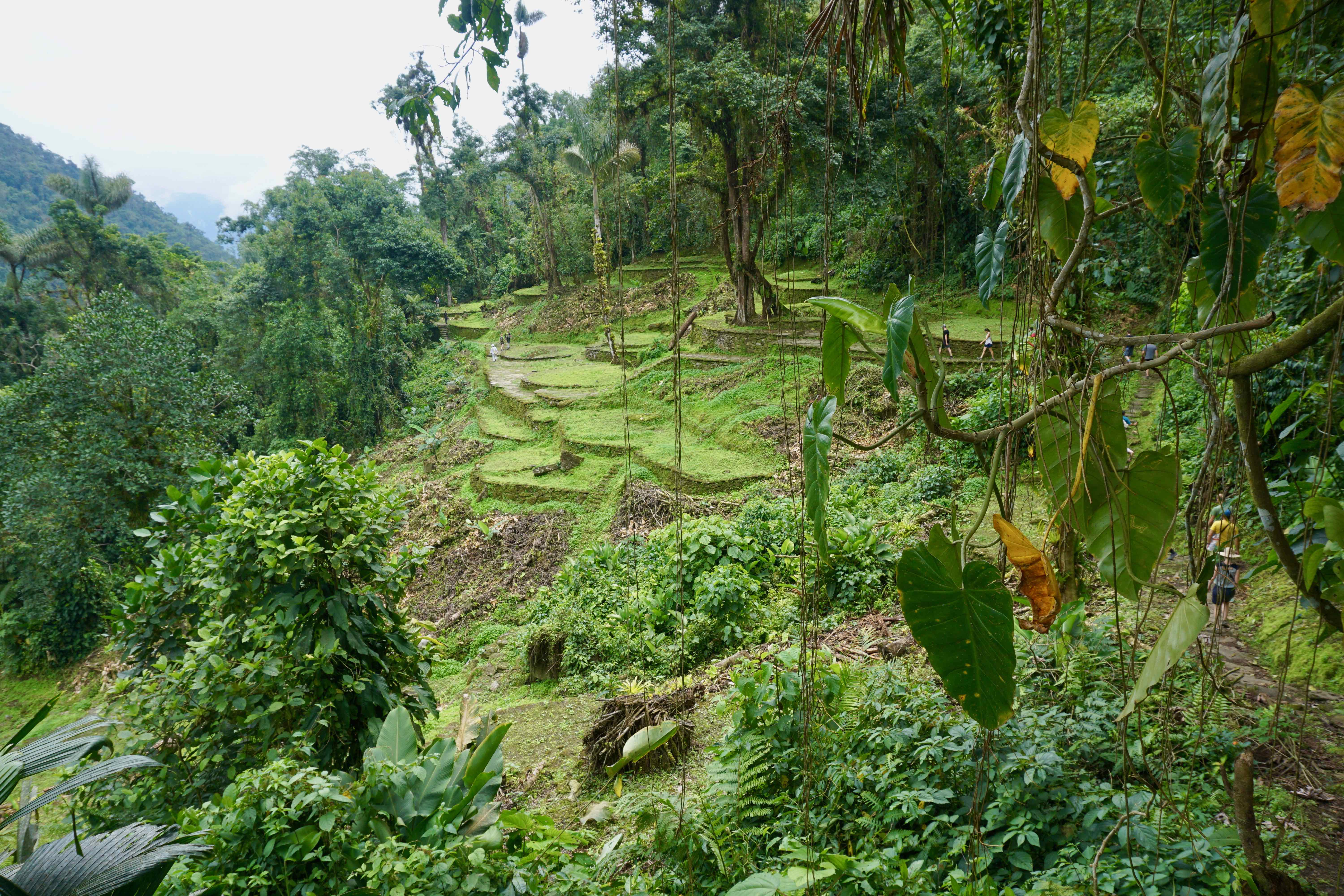
An entire section of the Lost City that I’d never seen photos of
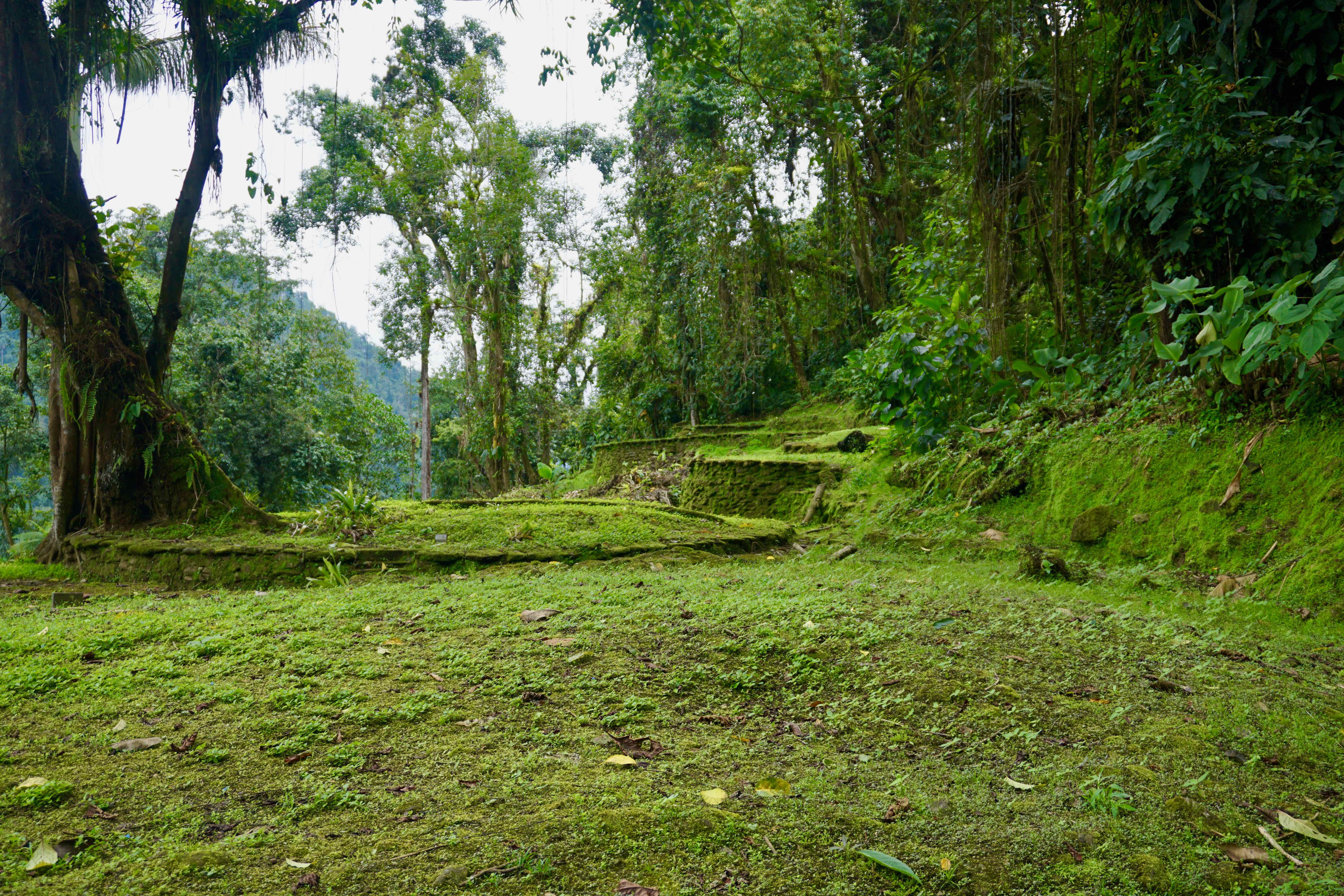
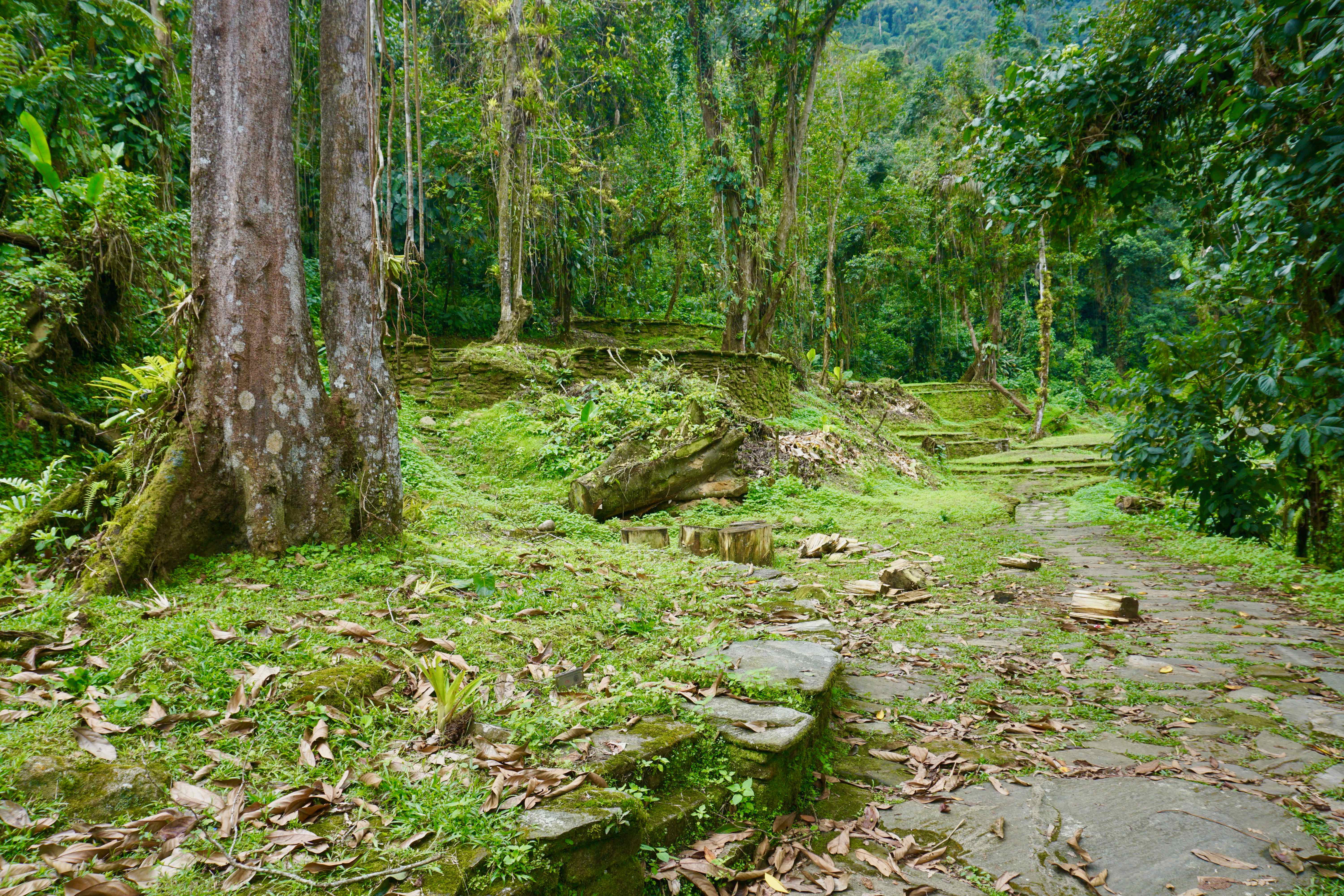
It’s still not too touristy
I hiked La Ciudad Perdida during Semana Santa, Latin America’s week long celebration of Easter, which is THE busiest time of the year to do anything or go anywhere. My guide told me that there were probably “3 times more people this week than normally.” Even so, it wasn’t that crowded.

The main plaza area, without a single tourist
Let’s be honest, the idea kind of sells itself. Who doesn’t want to want to add finding a Lost City deep in the Colombian mountains to their list of accomplishments? I would recommend going now before it becomes a cliche activity and before hordes of tourists do God knows what to the surroundings.
I also would like to mention that my group with Magic Tour Colombia was THE FIRST group to arrive to the ruins of the Lost City out of about 15 groups that left at the same time. Our guides got our butts in gear the morning of the 3rd day, knowing how important it was to arrive to the ruins before the masses did. Having the entire Lost City to ourselves, if only for 15 minutes or so, was truly special and a feeling that will stick with me for a long time.
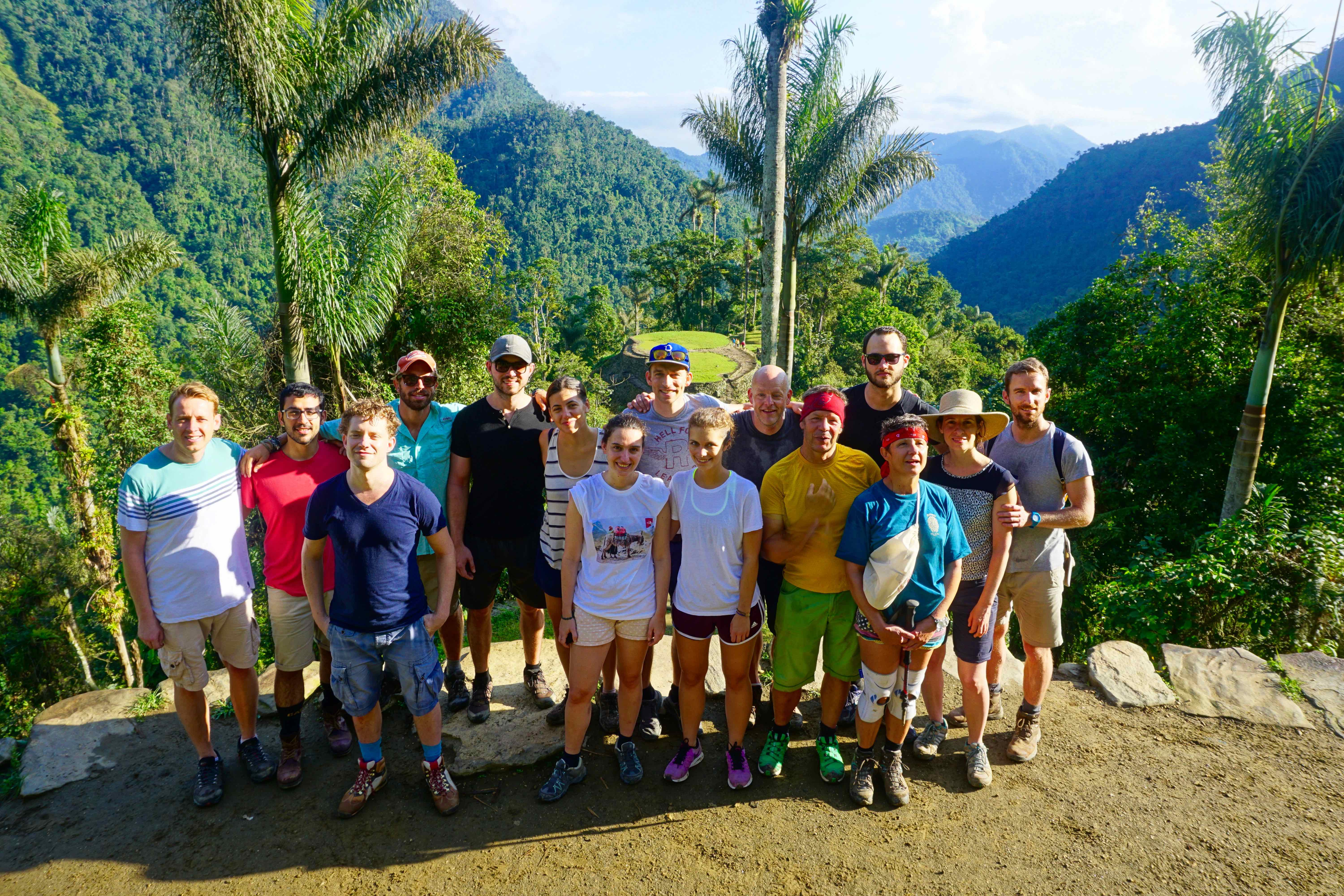
Our group – the first to reach the ruins! (“Grupo Numero Uno” haha)
You have to earn it
The saying “nothing good comes easy” can definitely be applied to the Lost City trek. Investing multiple days to achieve anything is ultimately more rewarding than instant gratification tasks. So is a multiple day hike to a secluded destination 10x more rewarding than visiting the drive-up, step-out, and take-a-picture destinations. I mean, you don’t think the Lost City got it’s name from being on the side of the highway, did you?
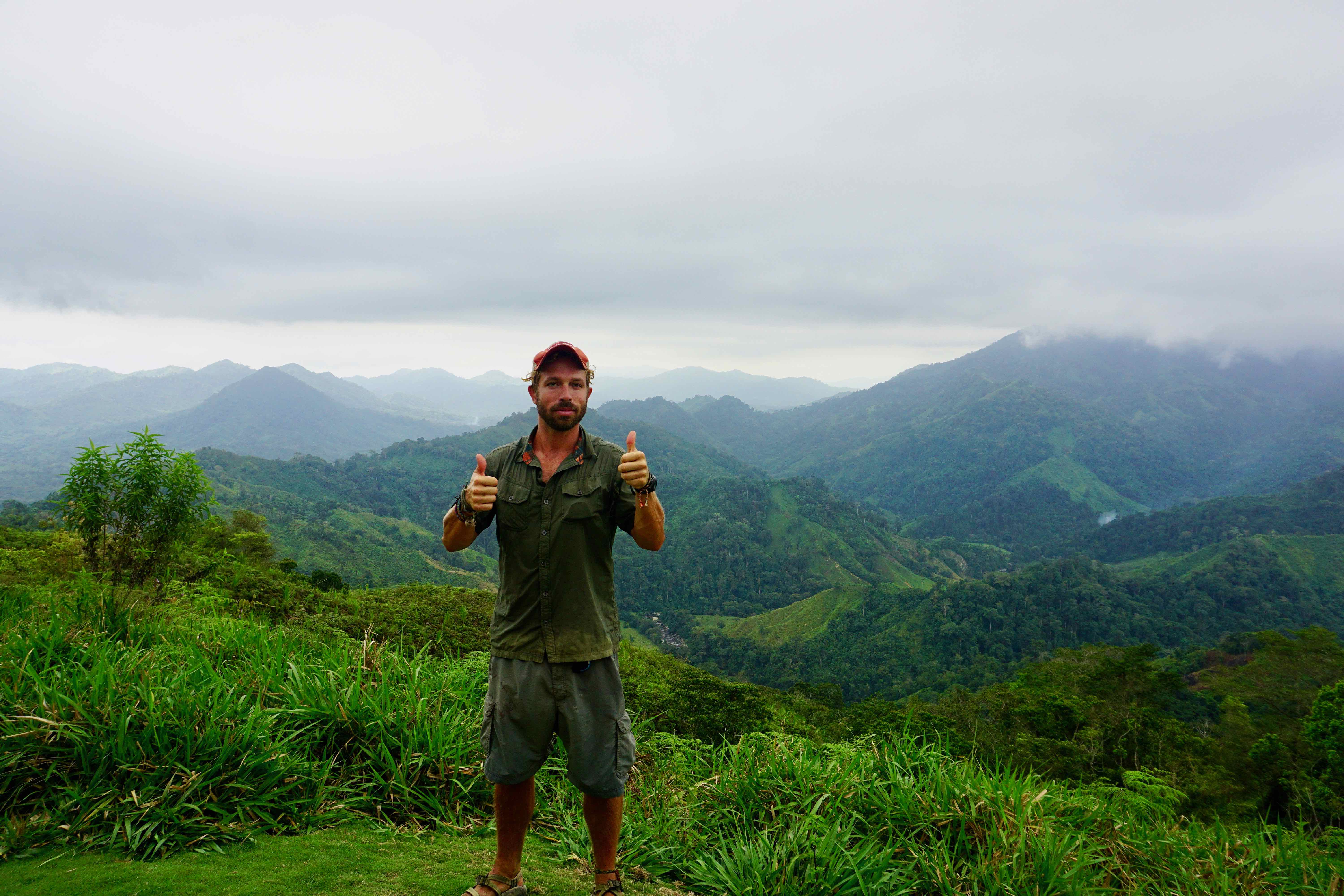
Completely soaked in sweat
You’ve spent days of strenuous hiking up & over the Sierra Nevada to get here. You’ve endured the 90% humidity of the rainforest, braved the incessant mosquitos, and hiked through sacred, indigenous territory, all to arrive at this very moment. You’ve now discovered a city so remote that not even the Spanish conquistadors’ probing expeditions led them here. This is all part of what makes the Lost City experience so powerful and memorable. You’ll never forget this accomplishment.
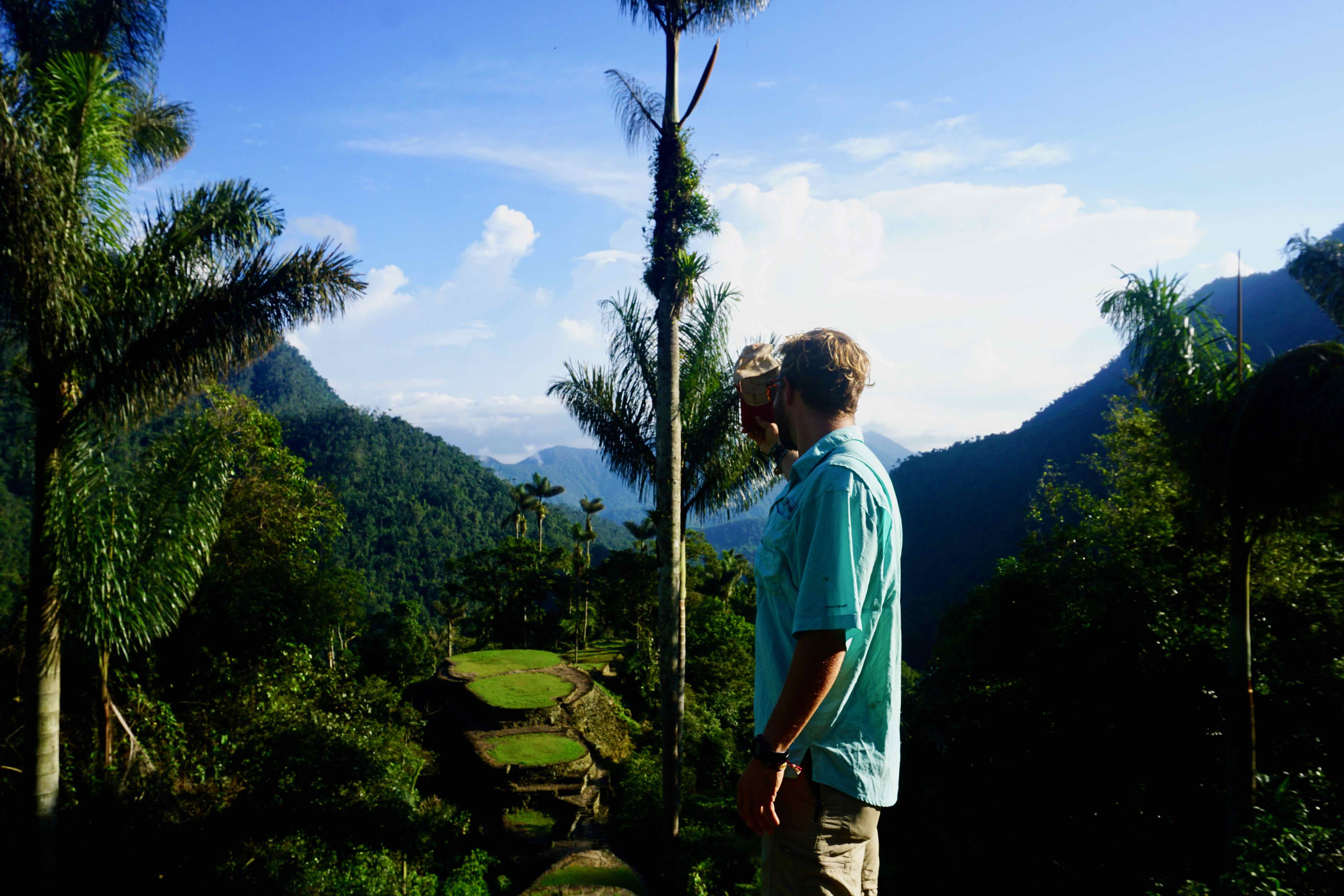
Hats off to the Lost City
So Do The The Lost City Trek Now!
There are plenty of archaeological ruins to explore around the world, but none that I know of that offer what trekking to The Lost City (La Ciudad Perdida) does. Most Mayan or Aztec ruins you can practically drive right up to. And of course Machu Picchu offers the multiple-day hike up the Inca Trail, which I plan on doing, but it’s so commercialized these days that it kind of lacks the allure and mystery that The Lost City has.
I also understand that it can be hard to justify spending 4-5 days hiking through the jungle to do anything. If you’re the type who doesn’t like hiking/camping/not having your first-world luxuries, then this hike is probably not for you. But if you’re an adventure junkie or outdoor lover like me, this is an absolute MUST-DO activity. I hope this post has shown you some reasons why!
Go now while trekking to the Lost City is still relatively unknown & unique. Surely in the years that come it will be overrun with tourists and will lose some of its appeal. And go with a tour company that knows what they’re doing and values your personal experience, even though they’ve already done it 1,000 times. Thanks Magic Tour for ensuring that I had the trip of a lifetime, I’ll never forget it!
Essential Info:
Phone/WhatsApp: +57(314)571-3645
Email: fanny@magictourcolombia.com
Cost: 850,000 Colombian Pesos (approx. $290USD at time of publishing). Includes all transport, all food, accommodations, guides, translators, and entrance to park for 4,5, or 6 days.
What to pack: Not much! The lighter your pack the better. All of your clothes will get completely wet, so there is no real need to bring a lot: 2x of quick-drying shirts & shorts, 1x of long pants & long sleeve shirt for night time, 3x underwear, 3x socks, 1x hiking shoes, 1x sandals. Hat, sunscreen, bug repellant (DEET), headlamp/flashlight, dry bags for electronics, sunglasses, hand sanitizer, and obviously all necessary medication & toiletries.
When to go: The dry season runs from December to April, but going in the “off-season” could mean cooler weather, far less people, and more of a chance to connect with locals.

First of all, I very much enjoyed reading this blog! It was incredibly well written and so descriptive that, combined with the pictures, I felt as if I was there as well. I now am convinced that this hike to the Lost City is an experience I must add to my life! Your travel through the Americas is so fascinating and inspiring! Keep it up…you’re convincing me that I need to start more adventures of my own as well! Who knows, one day I may pop in for a week ride along of your adventure 🙂
Now I don’t have to travel. That was a great adventure without sweating. That was so cool. Beautiful pictures and such great adjectives with great description. Thank you for sharing!
Engaging and informative post on the Lost City!
My friend and I traveled there last year, and we do not regret that decision. I’d actually be upset with myself had I gone to Colombian and not taken a part.
It’s funny that you mention the lack of information from other tour groups, because that was something I noted myself. We did go with the indigenous group and had a great time nonetheless, but we did miss out on some of the interesting history of the place and it’s rediscovery. Ah well! The trek was beautiful as you’ve mentioned, and this post does the trip justice.
Can’t wait to do it!
I’m totally sold! I’m heading to Colombia in August for a month or so in the country, and wanted to research options for the Lost City Trek and your blog post has just answered most of my questions and I’m really keen to use this tour company too! One quick question i have – did you book several weeks in advance or did you just book it once you got to the Santa Marta area (i.e. 1-2 days in advance?)
Thank you!
I booked it when i was there, but you never know with availability! I would go to their website and send them an email! Enjoy, you´re going to love it.